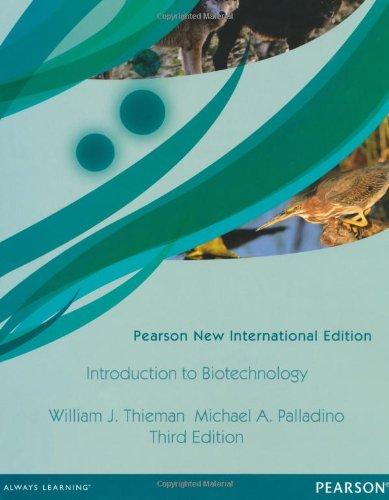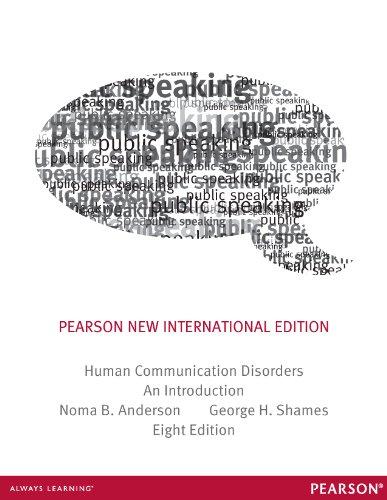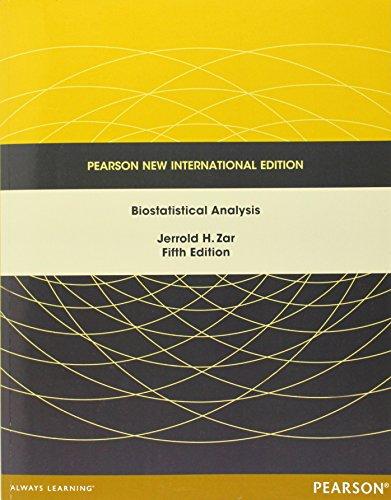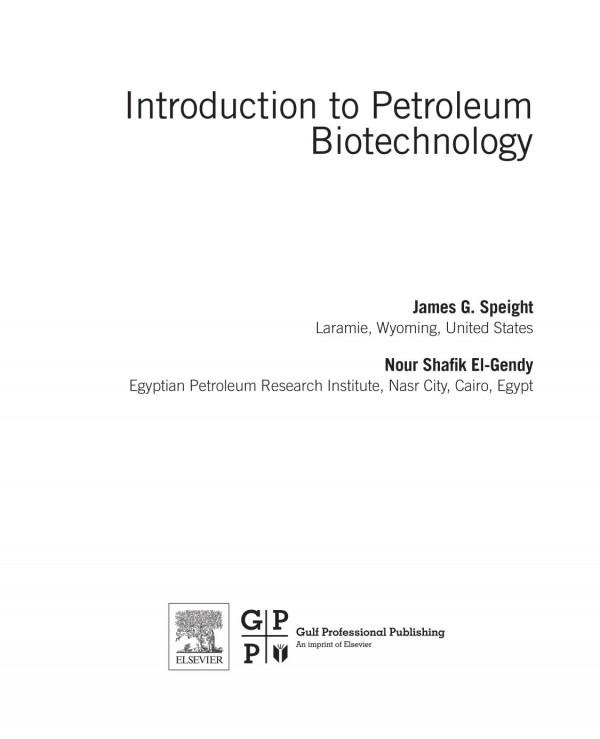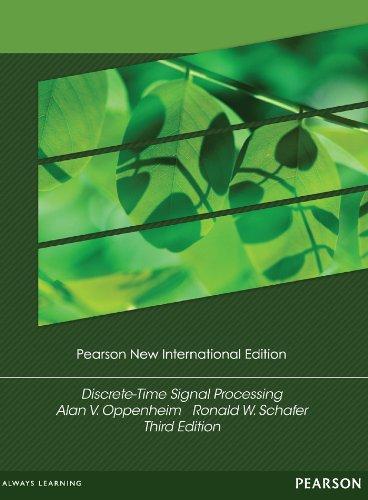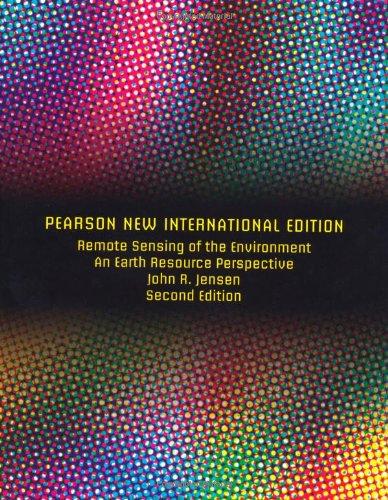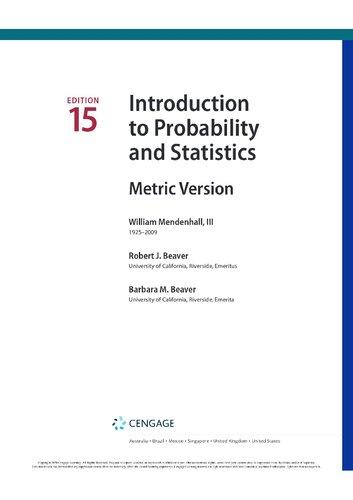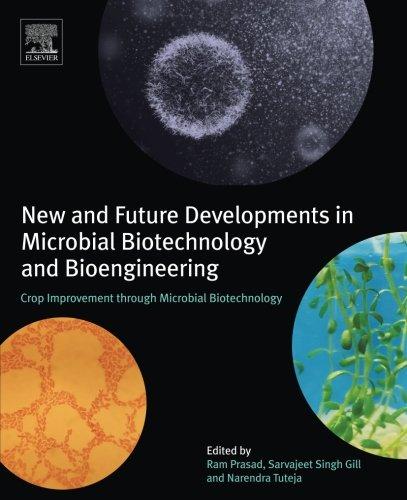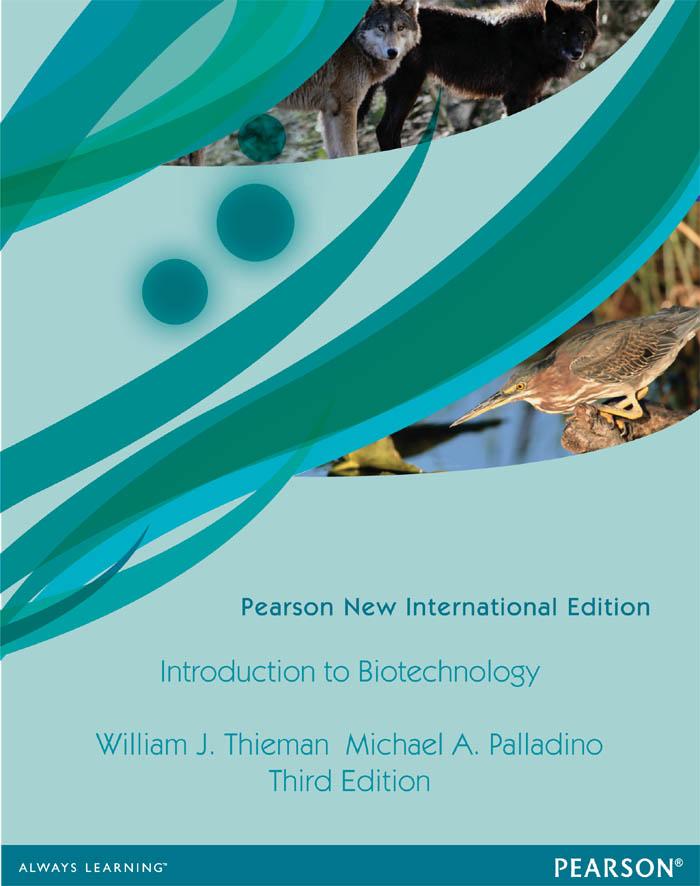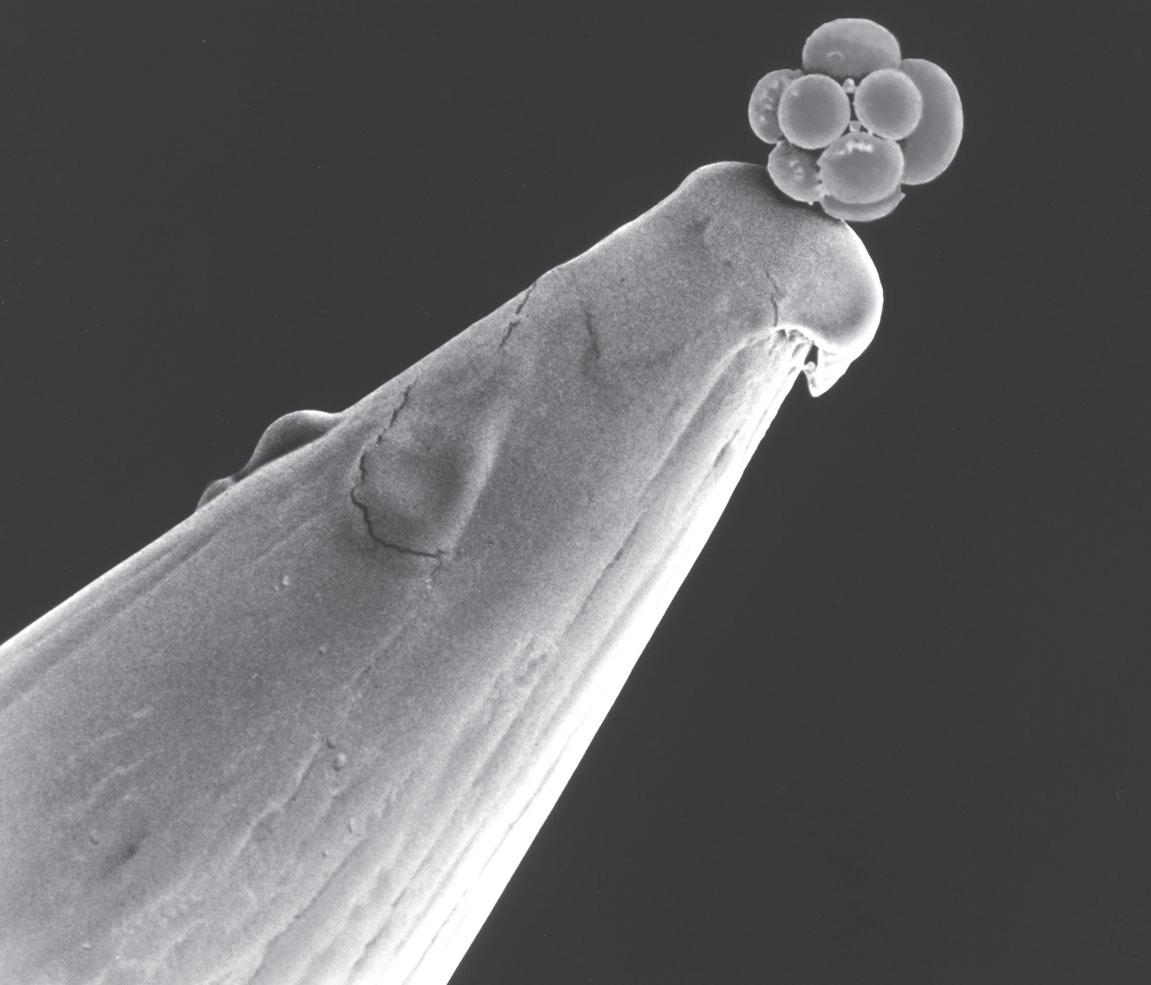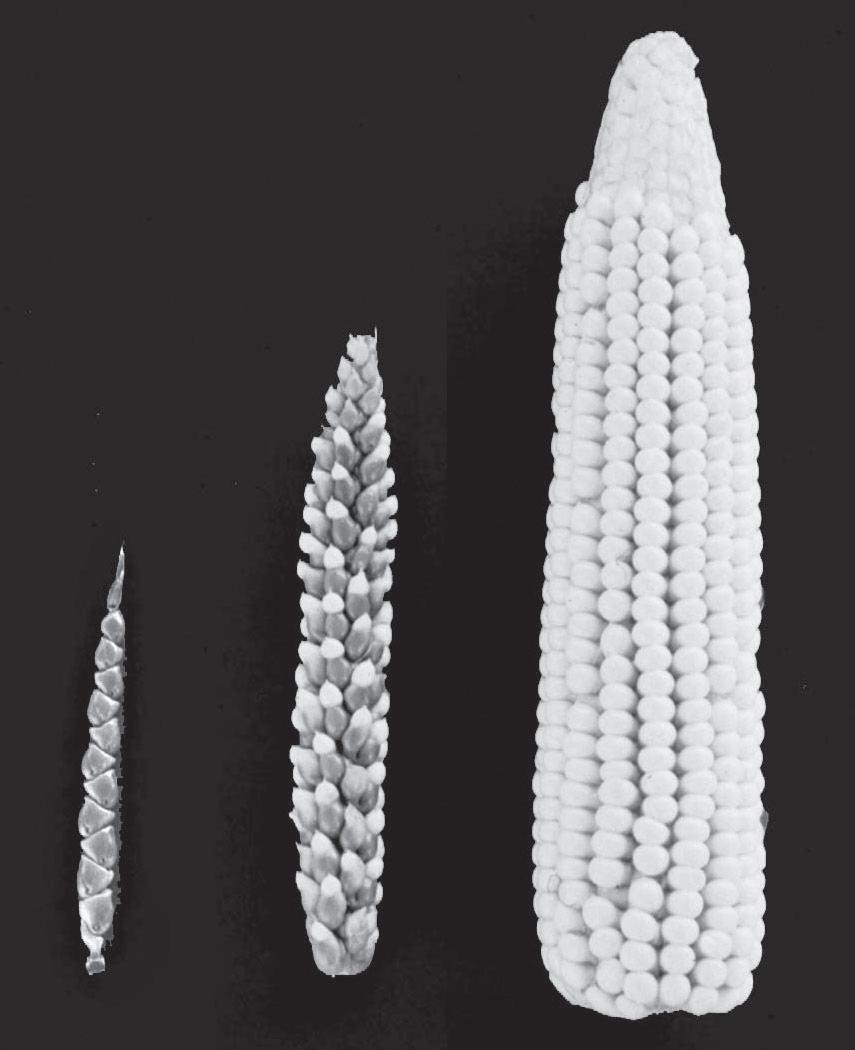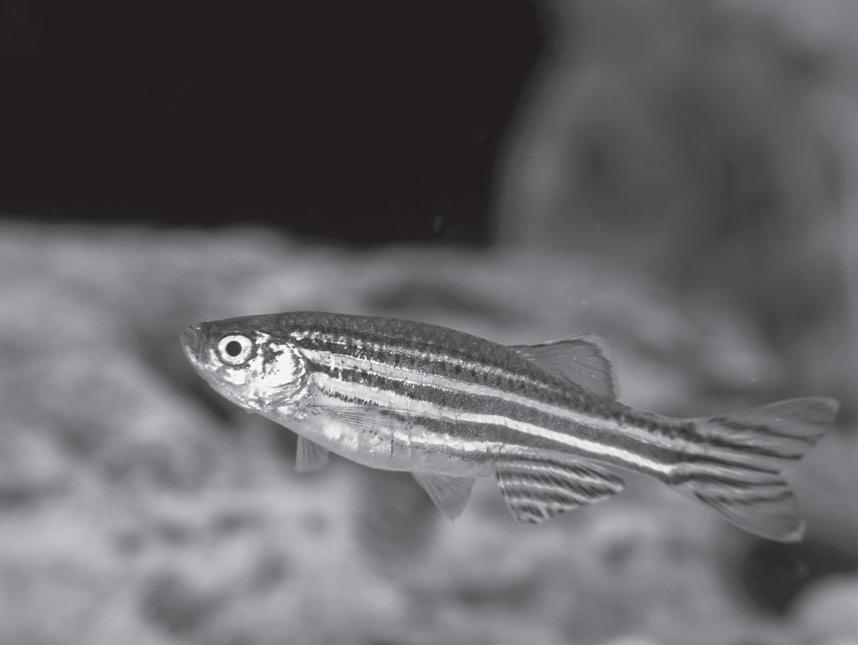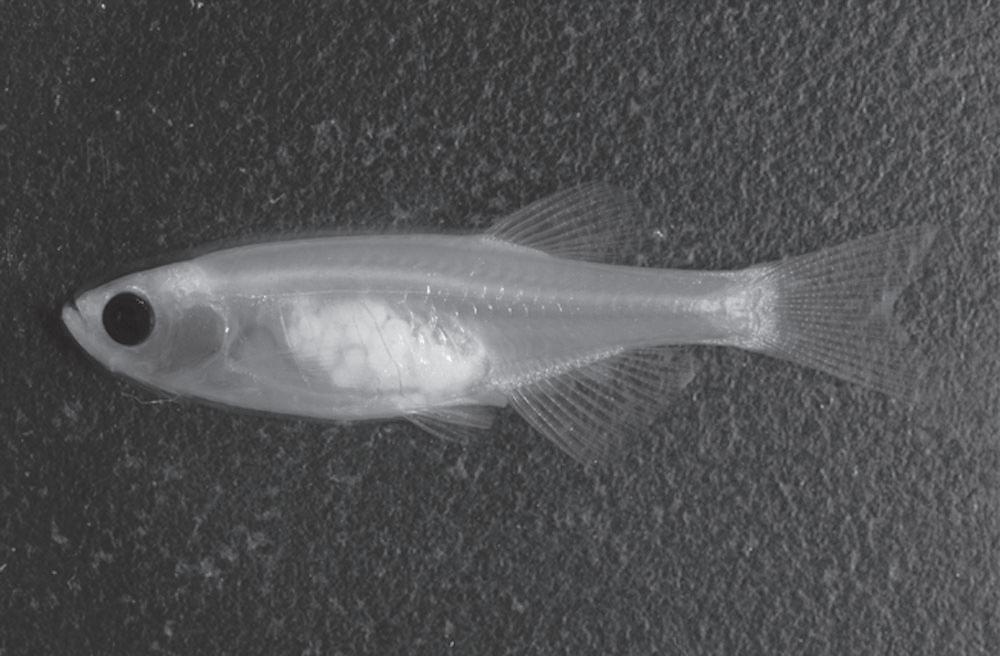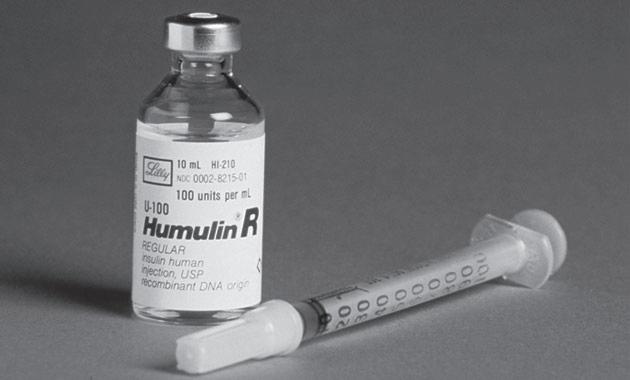Glossary
A (aminoacyl) site (of a ribosome): Portion of a ribosome into which aminoacyl tRNA molecules bind during translation.
accession number: Unique identifying letter and number code assigned to every cloned DNA sequence that is catalogued in databases such as GenBank (for example, BC009971 is the accession number for one of the human keratin genes, which produces a protein that is a major component of skin and hair cells). The accession number for any sequence can be used by scientists around the world to retrieve database information on that particular sequence.
acetylase: Enzyme produced by the lacA gene of the lactose (lac) operon in bacteria.
achromatopsia: A rare autosomal recessive genetic disease that affects cone cells in the retina, which are essential for color vision and some aspects of visual acuity. acquired mutations: These occur in the genome of somatic cells and are not passed along to offspring; can cause abnormalities in cell growth leading to cancerous tumor formation, metabolic disorders, and other conditions.
adenine: Abbreviated A; purine base present in DNA and RNA nucleotides.
adenosine triphosphate (ATP): A nucleoside-triphosphate that contains the nitrogenous base adenine. ATP is the primary form of energy used by living cells.
adenovirus: Virus that causes the common cold.
adult-derived stem cells (ASCs): Stem cells derived from tissues of an adult, as opposed to embryonic stem cells, which are derived from a blastocyst; can differentiate to produce other cell types.
aerobes: Organisms that use oxygen for their metabolism. aerobic conditions: Conditions in which oxygen is present. aerobic metabolism: Metabolism that requires oxygen. affinity chromatography: A separation technique, based on the unique match between a molecule and its columnbound chemical counterpart (like antigen/antibody), that involves passing proteins or other substances in solution over a medium that will bind to (“have an affinity for”) specific components of the solution. It is used to isolate fusion proteins from a mixture of bacterial cell proteins.
agarose gel electrophoresis: See gel electrophoresis agricultural biotechnology: A discipline of biotechnology that involves plants and their applications, including genetic engineering of plants for agricultural purposes.
Agrobacter: Soil bacteria that invade injured plant tissue. alcohol (ethanol) fermentation: Enzymatic breakdown of carbohydrates (sugars) in the absence of oxygen; products include ATP, CO2, and ethanol (alcohol) as waste products; important type of microbial metabolism used for the production of certain types of alcohol-containing beverages. allele-specific oligonucleotide (ASO) analysis: Genetic testing technique that involves using PCR with oligonucleotides specific to a disease gene to analyze a person’s DNA. alternative splicing: Splicing sometimes can join certain exons and cut out other exons, essentially treating them as introns. This process creates multiple mRNAs of different
sizes from the same gene. Each mRNA can then be used to produce different proteins with different, sometimes unique, functions. Alternative splicing allows several different protein products to be produced from the same gene sequence.
amino acids: Building blocks of protein structure; combinations of 20 different amino acids can join together by covalent bonds in varying order and length to make a polypeptide.
aminoacyl transfer RNA (tRNA): Transfer RNA (tRNA) molecule with an amino acid attached.
amniocentesis: A technique for obtaining fetal cells from a pregnant woman to analyze fetal cells to determine the genetic composition of the cells, such as the number of chromosomes or the sex of the fetus.
amniotic fluid–derived stem cells (AFSs): Stem cells in the amniotic fluid of pregnant women that have been found to have many of the same traits as embryonic stem cells.
amylase: An enzyme that digests starch.
anaerobes: Organisms that do not require oxygen for their metabolism.
anaerobic metabolism: Lacking oxygen; an organism, environment, or cellular process that does not require oxygen.
angel investors: Investors that save your company from financial ruin at the last minute (like an angel).
angiogenesis: The growth of new blood vessels.
Animal and Plant Health Inspection Service (APHIS): The branch of the USDA responsible for protecting U.S. agriculture from pests and diseases.
animal biotechnology: A diverse discipline of biotechnology that involves the use of animals to make valuable products such as recombinant proteins and organs for human transplantation; also includes organism cloning.
annotation: Bioinformatics approach that involves searching databases to determine whether the sequence and function of a gene sequence has already been determined.
antibiotic: A substance produced by microorganisms that inhibit the growth of other microorganisms; commonly used to treat bacterial infections in humans, pets, and farm animals.
antibiotic selection: See selection.
antibodies: Proteins produced in response to a non-self molecule by the immune system; antigen-binding immunoglobulins, produced by B cells, that function as the effector in an immune response.
antibody-mediated immunity: Portion of the immune system dedicated to producing antibodies that combat foreign materials; also known as humoral immunity.
anticodon: Three-nucleotide sequence at the end of a tRNA molecule. During translation, the anticodon binds to a specific codon in an mRNA molecule by complementary base pairing.
antifreeze proteins (AFPs): Category of proteins isolated from aquatic organisms that live in cold environments; these proteins have the unique property of lowering the freezing temperature of body fluids and tissues.
antigens: Molecules unique to specific surfaces that can stimulate antibody response; substances that trigger antibody production when introduced into the body.
antimicrobial drugs: Chemicals that inhibit or destroy microorganisms.
antiparallel: Refers to the 5’ and 3’ directionality of strands of DNA in which the two strands joined together by hydrogen bonds between complementary base pairs are oriented in opposing directions with respect to their polarity.
antisense molecule: See antisense RNA antisense RNA: An RNA molecule that is complementary to a native RNA.
antisense RNA technology: See antisense RNA
apoptosis: Involves a complex cascade of cellular proteins that cause cell death; controlled apoptosis is an important biological process that remodels tissues during development; uncontrolled apoptosis is involved in degenerative disease conditions such as arthritis; also known as “programmed cell death.”
aquaculture: Farming finfish, shellfish, or plants for commercial or recreational uses.
aquatic biotechnology: The use of aquatic organisms such as finfish, shellfish, marine bacteria, and aquatic plants for biotechnology applications.
Archaea: See domain Archaea
astaxanthin: A pigment that gives shrimp their pink color. Recombinant astaxanthin is used to change the color of aquaculture species such as salmon.
attenuated vaccine: Vaccine consisting of weakened, live microorganisms.
autografting: The transplantation of a patient’s own tissues from one region of the body to another; for example, skin or hair grafting, coronary artery bypass surgery.
autoradiograph: An image created by exposing photographic film to a radioactively labeled compound.
autoradiography: Technique that uses film to detect radioactive or light-releasing compounds (such as DNA probe) in cells, tissues, or blots; produces photographic film image called an autoradiogram or autoradiograph.
autosomes: Chromosomes whose genes are not primarily involved in determining an organism’s sex; chromosomes 1–22 in humans.
avian flu: “Avian influenza virus” refers to influenza A viruses found chiefly in birds, but infections with these viruses can occur in humans.
avidin: A protein in egg whites that binds biotin and inhibits bacterial growth.
B lymphocytes (B cells): White blood cells (leukocytes) that develop in the bone marrow and can mature into antibodyproducing cells called plasma cells.
bacilli: Rod-shaped bacteria.
Bacillus thuringiensis (Bt): A bacterium that produces a crystalline protein that dissolves the cementing substance between certain insect midgut cells.
bacteria: See domain Bacteria.
bacterial artificial chromosomes (BACs): Large circular vectors that can replicate very large pieces of DNA; used to clone pieces of human chromosomes for the Human Genome Project.
bacteriophages: Viruses that infect bacterial cells; often simply called phages.
baculoviruses: Viruses that attack insect cells.
band shifting: Equal molecular-weight fragments of DNA that do not migrate uniformly because of variations in the gel matrix.
Basic Local Alignment Search Tool (BLAST): Internet-based program from the U.S. National Center for Biotechnology Information (NCBI) that can be used for DNA nucleotidesequence-comparison (alignment) studies and for sequence searches in GenBank and other databases.
basic sciences: Research disciplines that examine fundamental aspects of biological processes, often without obvious direct applications (for curing disease or making a product).
batch (large-scale or scale-up) processes: Growing microorganisms such as bacteria or yeast and other living cells such as mammalian cells in large quantities for the purpose of isolating useful products in a batch.
ß-galactosidase: Enzyme produced by the lacZ gene of the lactose (lac) operon in bacteria; -galactosidase degrades the disaccharide lactose.
ß-sheet: One of two secondary structures of proteins.
bioaccumulation: Progressive concentration or accumulation of a substance, such as a chemical pollutant, as it moves up the “food chain” from organism to organism.
bioaugmentation (seeding): Adding bacteria or other microorganisms to a contaminated environment to assist native (indigenous) microbes in the bioremediation processes.
biocapsules: Tiny spheres or tubes filled with therapeutic cells or a chemical substance such as a drug; can be implanted for therapeutic purposes; also known as microcapsules.
biodegradation: The use of microorganisms to break down chemicals (not necessarily pollutants).
biodiversity: The range of different species present in an ecosystem.
bioethicist: A person who studies bioethics.
bioethics: The area of ethics (a code of values for our actions) concerning the implications of biologic and biomedical research and biotechnological applications (particularly with respect to medicine).
biofilming (biofouling): The attachment of organisms to surfaces; examples include the attachment of shellfish to the hull of a ship and the attachment of microorganisms to teeth.
biofuel: A product of biological organisms that can substitute or enhance existing fuels.
bioimpedance: A technique involving the use of low-voltage electricity to measure muscle mass and the fat content of tissues; used, for example, to measure the fat content of fish to be sold for consumption.
bioinformaticists: Scientists specializing in the bioinformatics.
bioinformatics: Interdisciplinary science that involves developing and applying information technology (computer hardware and software) for analyzing biological data such as DNA and protein sequences; also includes the use of computers for the analysis of molecular structures and creating databases for storing and sharing biological data.
biologic: Any medical preparation made from living organisms or their products.
biological: Pertaining to biology.
Biological License Agreement (BLA): Filed by a biotech company seeking approval of a biologically derived product such as a viral therapy, blood compound, vaccine, or protein derived from animals.
bioluminescence: The release of light by living organisms. biomarker proteins: A protein biomarker (see biomarkers).
biomarkers: Substances used as indicators of a biologic state. A characteristic that is objectively measured and evaluated as an indicator of normal biologic processes, pathogenic processes, or pharmacologic responses to a therapeutic intervention.
biomass: The dry weight of living material in part of an organism, a whole organism, or a population of organisms.
biopiles: Large piles of contaminated soil that have been removed from the original site. Air and vacuum systems are used to help dry these piles and release chemicals by evaporation. Vacuums are sometimes used to collect chemical vapors and trap them in filters.
bioprocessing engineers: Work at the frontiers of biologic and engineering sciences to “bring engineering to life” through the conversion of biologic materials into other forms needed by mankind.
bioprocessing: The use of biologic systems to manufacture (process) a product.
bioprospecting: Endeavors to capitalize on indigenous knowledge of natural resources. However, bioprospecting may also describe the search for previously unknown compounds in organisms that have never been used in traditional medicine.
bioreactors: Cell systems that produce biologic molecules (which may include fermenters).
bioremediation: The use of living organisms to process, degrade, and clean up naturally occurring or man-made pollutants in the environment.
biosensors: Living organisms used to detect or measure biological effects of some factor, such as a chemical pollutant, or condition.
biosimilar drugs: Also called “follow-on” biologics. Subsequent version of a recombinant protein product after the original patent has expired. The biosimilar is produced by a different company than the innovator holding the initial patent. As a result, when a biosimilar is made, the exact production processes are not the same as the innovator’s hence the product or its manufacturing is “similar” but not identical to the original protein. The equivalent of a generic for a pharmaceutical drug.
biotechnology: A broad area of science involving many different disciplines designed to use living organisms or their products to perform valuable industrial or manufacturing processes or applications that will solve problems.
bioterrorism: The use of biological materials (live organisms or their toxins) as weapons to cause fear in or harm against civilians.
bioventing: Pumping air or oxygen-releasing chemicals such as hydrogen peroxide into contaminated soil or water to stimulate aerobic degradation by microorganisms.
bioweapons: Biological materials used as weapons.
blastocyst: Hollow cluster of approximately 100 cells formed about 1 week after fertilization of an egg.
blunt ends: Double-stranded ends of a DNA molecule created by the action of certain restriction enzymes.
BRCA1 gene: A gene found in about 65% of human breast tumors. Commonly part of breast cancer diagnosis for treatment.
byssal fibers: Ultrastrong, protein-rich threads created by mussels and other shellfish. Byssal fibers have unique adhesive properties and can withstand great stress from stretching and shearing forces; attach shellfish to substrates such as rocks.
CAAT box: Short nucleotide sequence (CAAT) usually located approximately 80 to 90 base pairs “upstream” (in the 5’ direction) of the start site of many eukaryotic genes; part of promoter sequence bound by transcription factors used to stimulate RNA polymerase.
calcitonin: A thyroid hormone that stimulates calcium uptake by digestive organs and promotes bone-hardening (calcification).
callus: A loose collection of de-differentiated plant tissue.
Cancer Genome Atlas Project (TCGA): NIH sponsored project to identify and map important genes and genetic changes involved in cancer.
cancer stem cells (CSCs): Stem cells which develop to form cancerous tumors.
carbohydrases: Enzymes that digest carbohydrates.
carcinogen: A cancer-causing chemical.
carcinogenic: Cancer causing agents as chemicals and X-rays.
carrageenan: Polysaccharide (sugar) derived from seaweeds; wide range of uses in everyday products such as syrups, sauces, and adhesives as a “thickening” or bulking agent.
cDNA: DNA synthesized as an exact copy of mRNA called complementary DNA (cDNA). The mRNA is degraded by treatment with an alkaline solution or enzymatically digested; then DNA polymerase is used to synthesize a second strand to create double-stranded cDNA.
cell culture: Growing cells in laboratory conditions outside of a whole organism (in vitro); usually a term applied to growing mammalian cells.
cell line: An established or immortalized cell line that has acquired the ability to proliferate indefinitely, either through random mutation or deliberate modification. Numerous well-established cell lines are representative of particular cell types.
cell lysis: See lysis.
cellular therapeutics: Cell-based therapies. Including, for example, stem cells and implanted cells.
cellulase: Bacterial enzyme that degrades the polysaccharide cellulose (a primary component of the plant cell wall).
Center for Drug Evaluation and Research: A branch of the FDA that tracks total drug submissions routed to the drug review process comprised primarily of New Drug Application (NDA) related submissions, Abbreviated New Drug Application (ANDA) related submissions and Investigational New Drug (IND) related submissions.
centrifugation: Involves using an instrument called a centrifuge to apply a rotational force to samples to separate components based on their weight. Rotational forces measured in revolutions per minute (rpm) or times gravity (g). Centrifugation has a number of important applications
related to separating components of a mixture (for instance, separating proteins from DNA, separating different cell types).
centromere: Constricted region of a chromosome formed by intertwined DNA and proteins that hold two sister chromatids together.
chemotherapy: The treatment of cancer and other diseases with specific chemical agents or drugs that have a toxic effect on diseased cells or disease-causing microorganisms.
chimera: An organism with more than one type of cell; some cells are normal and some are genetically modified.
chitin: A complex polysaccharide polymer composed of repeating units of a sugar called N-acetylglucosamine. Chitin forms the hard outer shell (exoskeleton) of crabs, lobsters, crawfish, shrimp, and other crustaceans. Also found in insects and other organisms.
chitosan: Polysaccharide polymer derived from chitin. Used in many applications from health care to agriculture to dyes for fabrics and in dietary supplements for weight loss.
chloroplast: The photosynthetic organelle of complex plants.
cholera: Acute intestinal infection of humans caused by the bacterium Vibrio cholerae that causes severe diarrhea, which can result in dehydration and death, particularly in young children, if not treated. Spreads by contaminated water and food; bacterium often found in water supplies of developing countries with poor sanitary conditions.
chorionic villus sampling: Technique for sampling fetal cells from the placenta to determine the genetic composition of these cells, such as the number of chromosomes or the sex of the fetus.
chromatin: Strings of DNA wrapped around proteins; present in the nucleus of eukaryotes and the cytoplasm of prokaryotes; coils tightly together to form chromosomes during cell division.
chromatography: A columnar separation method that uses resin beads with special separation capabilities.
chromosomes: Highly folded arrangements of DNA and proteins; they package DNA to allow even separation of genetic material during cell division.
chymosin: See renin
clinical trials: Experimental process of testing products before approval of a drug, or treatment plan for widespread use in humans; clinical trials involve several “phases” of carefully planned experiments in different numbers of human participants to test drug effectiveness and safety.
clone: A genetically identical copy of a cell or whole organism; also describes the process of making copies of a gene, cell, or organism.
cocci: Bacteria with a spherical shape.
CODIS, Combined DNA Index System: CODIS enables federal, state, and local crime labs to exchange and compare DNA profiles electronically, thereby linking crimes to each other and to convicted offenders.
codons: A codon comprises a combination of three nucleotide sequences in an mRNA molecule. With few exceptions, each codon codes for a single amino acid; 64 possible codons compose the genetic code of mRNA molecules.
cohesive (sticky) ends: Overhanging single-stranded ends of a DNA molecule created by the action of certain restriction enzymes.
colchicine: Substance derived from crocus flowers that blocks microtubule formation; used to stop cell division (for instance, when creating polyploid organisms).
collagenase: Protease (protein-digesting enzyme) used in a number of biotechnology applications.
colony hybridization: A procedure for binding a singlestranded DNA probe to DNA molecules from bacterial colonies; used for library screening to identify a gene of interest.
comparative genomics: Studies that allow researchers to investigate gene structure and function in organisms in ways designed to understand gene structure and function in other species including humans.
competent cells: Bacterial cells that have been chemically treated to be able to take in DNA (transformation) from their surrounding environment; to be “competent” to accept DNA.
complementary base pairs: Refers to the nucleotides adenine (A) and thymine (T) [or uracil (U) when referring to RNA], and guanine (G) and cytosine (C); in a DNA molecule, A&T and G&C nucleotides join by hydrogen bonds to “complement” each other.
complementary DNA (cDNA): DNA copy of an mRNA molecule; mRNA can be copied into cDNA by the enzyme reverse transcriptase (for instance, when preparing a cDNA library).
complementary DNA (cDNA) library: DNA copies of all mRNA molecules expressed in an organism’s cells; can be “screened” to isolate genes of interest.
composting: Mixing soil with hay, straw, grass clippings, wood chips, or other similar “bulking” materials to stimulate biodegradation by soil microbes; also used to degrade everyday materials such as vegetable scraps, grass clippings, weeds, and leaves.
computer-automated DNA sequencing methods: Computer assisted methodologies for DNA sequencing. Allow for sequencing and analysis of large amounts (high-throughput) of sequence data compared to older manual sequencing methods.
contigs (contiguous sequences): Restriction enzyme–digested pieces of entire chromosomes are sequenced separately, and then computer programs are used to align the fragments based on overlapping sequence pieces called contigs (contiguous sequences).
Coomassie stain: A sensitive stain that reacts with proteins. Coordinated Framework for Regulation of Biotechnology: A 1984 governmental report that proposed that biotechnology products be regulated much like traditional products.
copy number: The number of copies of a particular DNA molecule or gene sequence such as a plasmid in a bacterial cell.
copy number variations (CNVs): DNA segments larger than 1 kb such as deletions, insertions and duplications in the genome that vary between individuals; account for much of the genome diversity identified between humans.
cosmid vectors (cosmids): Large circular double-stranded DNA vectors that are used for gene-cloning experiment in bacteriophages.
credible utility: Requirement of the USPTO that the researcher must convince the patent office that the application is backed by sound science.
crown gall: A hardened mass of protruding dedifferentiated plant tissue usually resulting from an attack from Agrobacter.
cryopreservation: Storage of tissue samples at ultra low temperatures (–150 to –20°C).
customer relations specialists: Sometimes work in QA divisions of a company. One function of customer relations is to investigate consumer complaints about a problem with a product and follow up with the consumer to provide an appropriate response or solution to the problem encountered. cystic fibrosis transmembrane conductance regulator (CFTR): Protein that serves as a “pump” to regulate the amount of chloride ions in cells; mutations in the CFTR are the cause of the genetic disorder cystic fibrosis.
cytokines: Stimulating factors that enhance an animal’s immune system function.
cytoplasm: The inner contents of a cell, consisting of fluid (cytosol) and organelles; its boundaries are defined by the plasma membrane.
cytosine: Abbreviated C; pyrimidine base present in DNA and RNA nucleotides.
cytosol: Gel-like, nutrient-rich aqueous (water-based) fluid of the cytoplasm.
dideoxyribonucleotide (ddNTP): Modified nucleotide. A ddNTP differs from a normal deoxyribonucleotide (dNTP) because it has a hydrogen group attached to the 3’ carbon of the deoxyribose sugar instead of a hydroxyl group-OH.
denaturation: A process that involves using high heat or chemical treatment to break hydrogen bonds in DNA or RNA molecules to separate complementary base pairs and create single-stranded molecules; also refers to the act of changing protein structure (through heat or chemical treatment).
deontological (Kantian) approach: Developed by German philosopher Immanuel Kant, this approach suggests that absolute principles (of moral or ethical behavior) should be followed to dictate our actions.
deoxyribonucleic acid (DNA): Double-stranded nucleic acid consisting of bases (adenines, guanines, cytosines, thymines), sugars (deoxyribose), and phosphate groups arranged in a helical molecule; inherited genetic material that contains “genes,” which direct the production of proteins in a cell.
depolymerization: A process of reducing multiunit structures to single units.
deregulated status: First step in the APHIS (USDA) review of a genetically altered product in which field-test reports, scientific literature, and any other pertinent records are checked before APHIS determines whether the plant is as safe to grow as traditional varieties.
design patent: A design for an article of manufacture submitted to the USPTO that is dictated primarily by the function of the article (such as a 3D shape).
diabetes mellitus: A condition of elevated blood sugar. There are several different forms of diabetes. In some people (type 1 or insulin-dependent diabetes mellitus), the hormone insulin is missing.
diafiltration: See dialysis
dialysis: A separation of water and a solute involving a semipermeable membrane.
dicer: An enzyme that cuts microRNA transcripts into short single-stranded pieces of 21 to 22 nucleotides.
dicotyledonous: A term describing a seed with two embryonic seed leaves (like peanuts).
dideoxyribonucleotide (ddNTP): Nucleotides used for certain types of DNA sequencing methods. Structurally different than nucleotides because they lack oxygen atoms at positions 2 and 3 of the deoxyribose sugar. As a result ddNTPs are called “chain-terminating nucleotides” because they cannot form phosphodiester bonds.
differential display PCR: A PCR technique that uses random primers to amplify DNA in two or more different samples with the purpose of identifying randomly amplified genes that are different (differentially expressed) in one sample compared with another sample.
differentiation: Cellular maturation process; involves changes in patterns of gene expression that affect the structure and functions of cells. For instance, embryonic stem cells differentiate to produce mature cells such as neurons, liver cells, skin cells, and all other cell types in the body.
diploid: Refers to a cell or an organism consisting of two sets of chromosomes: usually, one set from the mother and another set from the father. In a diploid state, the haploid number is doubled; thus, this condition is also known as 2n.
diploid number: Two sets of chromosomes (2n); often used to describe cells with two sets of chromosomes, typically one set from each parent.
directed molecular evolution: A process that selects for proteins after extensive mutations.
direct-to-consumer (DTC) genetic tests: DNA sequence analysis or genetic testing of human DNA for comparison to known sequences that have been associated with abnormal human conditions; DTCs can be purchased directly without prescription.
DNA-binding domains: Regions with folded structural arrangements of amino acids called motifs that interact directly with DNA.
DNA fingerprinting: An analysis of an organism’s unique DNA composition as a characteristic marker or fingerprint for identification purposes, such as forensic analysis, remains identification, and paternity. DNA fingerprinting is also used in biologic research (for example, to compare related species based on their DNA sequences).
DNA helicase: Enzyme that separates two strands of a DNA molecule during DNA replication.
DNA library: See genomic DNA library or complementary (cDNA) library
DNA ligase: Enzyme that forms covalent bonds between incomplete (Okazaki) fragments of DNA during DNA replication; routinely used for joining DNA fragments in recombinant DNA experiments.
DNA microarray (gene chip): A chip consisting of a glass microscope slide containing thousands of pieces of singlestranded DNA molecules attached to specific spots on the slide; each spot of DNA is a unique sequence.
DNA polymerase III: One form of DNA polymerase; the primary DNA polymerase which copies DNA in prokaryotes.
DNA polymerases: Key enzymes that copy strands of DNA during DNA replication to create new strands of nucleotides; these have important applications for synthesizing DNA in molecular biology experiments.
DNAse: DNA-degrading enzyme.
DNA sequencing: Laboratory technique for determining the nucleotide “sequence” or arrangement of A, G, T, and C nucleotides in a segment of DNA.
doctrine of equivalents: If a patent holder claims patent infringement on two similar DNA sequences, a court must decide whether the sequences have essentially the same function.
domain Archaea: A classification (domain) of prokaryotic cells; a common feature of these microbes is that they live in extreme environments, for example, boiling hot springs.
domain Bacteria: Taxonomic category of living organisms that includes bacteria; one of three domains (Bacteria, Archaea, Eukarya), domain Bacteria is the most diverse domain consisting of primarily unicellular prokaryotes.
domains: Taxonomic categories above the kingdom level: Archaea, Bacteria, and Eukarya.
dot blot: A detection strip coated with DNA sequences that reflect sites in human DNA where antibody-forming alleles (gene) differ.
double-blind trial: Study, such as a clinical trial, in which neither the patients nor the researchers administering the treatment know which patients receive a drug treatment and which patients receive a placebo; researchers learn the treatment of each patient after the study is completed.
Down syndrome: Human genetic disorder first described by John Langdon Down. Most commonly results from individuals having three copies of chromosome 21 (trisomy 21). Characteristics of affected individuals include a flat face; shortness; short, broad hands and fingers; protruding tongue; and impaired physical, motor, and mental development.
downstream processing: Purification processes involved in producing a pure product such as a recombinant protein.
DPT vaccine: Childhood vaccine designed to provide immune protection against bacterial toxins diphtheria, pertussis, and tetanus (contains killed Bordetella pertussis cells). Microbes producing these toxins cause upper respiratory infections, whooping cough, and tetanus (muscle spasm and paralysis), respectively.
E site: A groove through which tRNA molecules leave the ribosome.
efficacy: The effectiveness of a particular product such as a drug or medical procedure.
effluent: Water that has been treated to remove chemical pollutants or sewage; treated water as it leaves a treatment facility, such as water leaving a sewage-treatment plant.
electroporation: A process for transforming bacteria with DNA that uses electrical shock to move DNA into cells; can also be used to introduce DNA into animal and plant cells.
embryo twinning: Splitting embryos in half at the two-cell stage of development to produce two embryos.
embryonic stem cells (ESCs): Cells typically derived from the inner cell mass of a blastocyst; cells can undergo differentiation to form all cell types in the body.
Encyclopedia of DNA Elements (ENCODE) Project: Genome project to identify DNA regulatory sequences. endotoxins (lipopolysaccharides): Molecules that are toxic to cells; endotoxins are part of the cell wall of certain bacteria; endotoxins cause cell death.
enhancers: Specific DNA sequences that bind proteins called transcription factors to stimulate (“enhance”) transcription of a gene.
enucleation: Removal of the DNA from the nucleus of a cell.
Environmental Genome Project: NIH program designed to study the impacts of environmental chemicals on human genetics and disease.
Environmental Protection Agency: See U.S. Environmental Protection Agency
environmental genomics (metagenomics): Involves sequencing genomes for entire communities of microbes in environmental samples of water, air, and soils from oceans throughout the world, glaciers, mines—virtually every corner of the globe.
EnviroPig: A transgenic pig expressing the enzyme phytase in its saliva. It is deemed environmentally friendly because it produces substantially less phosphorus in its urine and feces than do nontransgenic pigs.
enzymes: Catalytic proteins.
ES (embryonic stem) cell transfer: Embryonic stem cells (ES cells) are collected from the inner cell mass of blastocysts. Transformed ES cells are usually injected into the inner cell mass of a host blastocyst.
Epigenome: Modifications in an organisms genome that are not due to mutations in DNA sequence.
ethidium bromide: Tracking dye that penetrates (intercalates) between the base pairs of DNA. Commonly used to stain DNA in gels because ethidium bromide fluoresces when exposed to ultraviolet light.
eugenics: The creation of a new superior species of human. eukaryotic cells: Cells that contain a nucleus, including plant and animal cells, protists, and fungi.
European Agency for the Evaluation of Medicinal Products (EMEA): Agency that authorizes medicinal products for human and veterinary use. It also helps spread scientific knowledge by providing information on new products in all 11 official EU languages.
exons: Protein-coding sequences in eukaryotic genes and mRNA molecules.
ex situ bioremediation: Removing contaminated soils or water from the site of contamination for clean-up at another location (as opposed to cleaning up pollutants at the contaminated site—a process called in situ bioremediation).
ex vivo gene therapy: Gene-therapy procedure that involves removing a person’s cells (such as blood cells) from the body, introducing therapeutic genes into these cells, and then reintroducing the cells back into a person.
experimental use permit (EUP): Permit issued by the EPA for field experiments with new plant varieties with pesticidal capabilities that involve at least 10 acres of land or 1 acre of water; these experiments cannot be conducted without an experimental use permit.
expressed sequence tags (ESTs): Small incomplete pieces (tags) of gene sequence such as those derived from a cDNA library; represent mRNAs expressed in a given tissue.
expression vector: DNA vector such as a plasmid that can be used to produce (express) proteins in a cell.
extrachromosomal DNA: DNA that is not part of an organism’s nuclear (chromosomal) DNA; examples include plasmid and mitochondrial DNA.
fermentation: A metabolic process that produces small amounts of ATP from glucose in the absence of oxygen and also creates byproducts such as ethyl alcohol (ethanol) or lactic acid (lactate). Fermenting microbes (bacteria and yeast) are important for producing a variety of beverages and foods, including beer, wine, breads, yogurts, and cheeses.
fermenters (bioreactors): Containers for growing cultures of microorganisms or mammalian cells in a batch process. Fermenting vessels allow scientists to control and monitor growth conditions such as temperature, pH, nutrient concentration, and cell density. Fermenters do not require oxygen when anaerobic organisms are fermenting nutrients. Bioreactors use non-fermenting organisms that require oxygen.
fertilization (nutrient enrichment): Addition of nutrients (fertilizer such as nitrogen and phosphorus) to a contaminated environment to stimulate growth and activity of naturally occurring soil microorganisms that will aid bioremediation.
field trials: Tests outside of the laboratory required by APHIS (USDA) after a new plant has been engineered in a laboratory; may require several years to investigate everything about the plant, including disease resistance, drought tolerance, and reproductive rates.
5’ end: The end of a strand of DNA or RNA in which the last nucleotide is not attached to another nucleotide by a phosphodiester bond involving the 5’ carbon of the pentose sugar.
finance divisions: Unit responsible for overseeing company finances.
fluorescence in situ hybridization (FISH): Laboratory technique that uses single-stranded DNA or RNA probes labeled with fluorescent nucleotides to identify gene sequences in a chromosome or cell in situ (Latin for “in its original place”).
Food and Drug Administration (FDA): An agency of the federal government that regulates food and drug safety.
forensic biotechnology: The analysis and application of biologic evidence such as DNA and protein-sequence data to help solve or recreate crimes.
forensic science: Application of a broad spectrum of sciences to answer questions of interest to a legal system.
frameshift mutation: Mutation resulting from the addition or deletion of nucleotides that causes a shift in the genetic code-reading frame of a gene.
functional genomics: Genetic-sequencing analysis of genes active during a cellular event.
fungi: Eukaryotic organisms that belong to kingdom Fungi.
fusion proteins: A “hybrid” recombinant protein consisting of a protein from a gene of interest connected (fused) to another, well-known protein that serves as a tag for isolating recombinant proteins.
gametes: Haploid cells often called “sex” cells include human sperm and egg cells (ova). Gametes join together during fertilization to form a zygote (see meiosis).
gel electrophoresis: Laboratory procedure that involves using an electrical charge to move and separate biomolecules of different sizes, such as DNA, RNA, and proteins, through a semisolid separating gel matrix. Examples include agarose gel electrophoresis and polyacrylamide gel electrophoresis (PAGE).
GenBank: Renowned public database of DNA sequences provided by researchers throughout the world; resources for sharing and analyzing DNA sequence information.
gene: A specific sequence of DNA nucleotides that serves as a unit of inheritance. Genes govern visible and invisible characteristics (traits) of living organisms in large part by directing the synthesis of proteins in a cell.
gene chip: See DNA microarray
gene cloning: The process of producing multiple copies of a gene.
gene doping: Defined by the World Anti-Doping Agency as “the non-therapeutic use of cells, genes, genetic elements, or of the modulation of gene expression, having the capacity to improve athletic performance.”
gene expression: Term generally used to describe the synthesis (“expression”) of RNA by a particular cell or tissue. For instance, if mRNA for the fictitious gene korn is detected in a tissue by PCR or Northern blot analysis, that tissue is said to express the korn gene.
gene gun: A microprojectile device used to propel genes on the surface of metal particles into cells.
Genentech: California company. Name derived from geneticengineering technology. Founded in 1976 and widely recognized as the world’s first biotechnology company.
gene regulation: General term used to describe processes by which cells can control gene activity or “expression” (RNA and protein synthesis).
gene therapy: The use of therapeutic genes to treat or cure a disease process; also refers to the delivery of genes to improve a person’s health.
generally-recognized-as-safe (GRAS) status: Status granted by the FDA if a food product or additive poses no foreseeable threat.
generic drugs: Copies of brand-name products that generally have the same effectiveness, safety, and quality but are produced at a cheaper cost to the consumer than the brandname drugs.
genetic code: Information contained in bases of DNA and RNA that provide cells with instructions for synthesizing proteins; consist of three-nucleotide combinations called codons. genetic engineering: The process of altering an organism’s DNA. This is usually by design.
Genetic Information Nondiscrimination Act: This act prohibits discrimination based on genetics and the improper use of genetic information in health insurance and employment.
Genetic Testing Registry (GTR): A branch of the NCBI projected to be developed by late 2011, it will provide access to information about genetic tests for inherited and somatic genetic variations, including newer types of tests such as arrays and multiplex panels. GTR information about tests
primarily will be based on voluntary data submissions by test developers and manufacturers.
genetically modified (GM) foods: Foods derived from sources that have been genetically modified (and must be approved) for consumption.
genetically modified (GM) organisms: GM organisms included selectively bred and transgenic organisms. For example, GM crops have been produced to plants that can resist pests, disease, or harsh climates, allowing better production of crops.
genome: All of the genes in an organism’s DNA.
Genome 10K plan: Project to create a genomic “zoo” containing the sequences of 10,000 vertebrate species.
genomic DNA library: Collection of DNA fragments containing all DNA sequences in an organism’s genome; can be “screened” to isolate genes of interest.
genomics: The study of genomes.
germline genetic engineering: Genetic alteration of sperm, eggs, or embryos to create inheritable genetic changes in offspring.
Gleevec: A drug used to treat certain types of leukemia (cancer that begins in the white blood cells) and other cancers of the blood cells. Imatinib (Gleevec) is also used to treat gastrointestinal stromal tumors.
glycosylation: A natural process of adding sugar units to proteins by complex cells.
glyphosphate: A small molecule that interacts and blocks 5-enolpyruvylshikimate-3-phosphate synthase (EPSPS), a key enzyme in plant photosynthesis. Resistant plants have a substitute pathway obtained by gene transfer.
Golden Rice: Genetically engineered rice with high vitamin A content.
good clinical practice (GCP): An FDA requirement governing clinical trials that protects the rights and safety of human subjects and ensures the scientific quality of experiments.
good laboratory practice (GLP): An FDA requirement that testing laboratories follow written protocols, have adequate facilities, provide proper animal care, record data properly, and conduct valid toxicity tests.
good manufacturing practice (GMP): Regulations instituted by the FDA to govern animal studies of pharmaceutical products.
green fluorescent protein (GFP): Protein produced by the bioluminescent jellyfish Aequorea victoria. Protein fluoresces when exposed to ultraviolet light; the GFP gene is used as a reporter gene.
Gram stain: Technique for staining the bacterial cell wall that can be used to divide bacteria into different categories, gram-positive or gram-negative bacteria.
growth factors: Molecules that stimulate cell growth and division.
growth hormone (GH): A peptide hormone produced by the pituitary gland; accelerates the growth of bone, muscle, and other tissues.
guanine: Abbreviated G; purine base present in DNA and RNA nucleotides.
HAMA response: When mouse hybridoma-produced human antibodies produce enough “mouse” antigens, they evoke this undesirable immune response in humans.
haploid: A single set of 23 chromosomes.
haploid number: A single set of chromosomes (n); often used to describe cells with a single set of chromosomes.
HapMap Project: See International HapMap Project.
helix: One of two secondary structures of proteins.
hemoglobin: Oxygen-binding and oxygen-transporting protein of red blood cells in vertebrates. Mutation of globin genes that encode hemoglobin results in a number of different human blood disorders with a genetic basis, including sickle-cell disease.
Herceptin: Herceptin is approved for the treatment of earlystage breast cancer that is Human Epidermal growth factor Receptor 2-positive (HER2+) and has spread into the lymph nodes, or is HER2+ and has not spread into the lymph nodes. If it has not spread into the lymph nodes, the cancer needs to be estrogen receptor/progesterone receptor (ER/ PR)-negative or have one high risk feature.
high-performance liquid chromatography (HPLC): Highpressure separation of similar proteins by using incompressible beads with special properties.
Hippocratic Oath: An oath that embodies the obligations and duties of medical doctors; one expectation of the oath is that physicians treat patients with the intent of not worsening human health (“first, do no harm”).
histones: DNA-binding proteins that are important for chromosomal structure.
homologous pairs: Pairs of chromosomes or genes that occur in organisms with multiple sets of chromosomes.
homologous recombination: A gene recombines with its corresponding existing gene on a chromosome (with which it has a high degree of sequence similarity), replacing part or all of the gene.
homologues: Related genes in different species; genes share sequence similarity because of a common evolutionary origin. hormones: Molecules involved in chemical signaling between cells and organs; transported in body fluids, hormones interact with and control the activity of many cells.
human antimouse antibody (HAMA) response: Mouse hybridomas produce enough “mouse” antigens that they still evoke an undesirable immune response in humans.
human embryonic stem cells: Stem cells are immature cells that can grow and divide to produce different types of cells such as skin, muscle, liver, kidney, and blood cells. Most stem cells are obtained from embryos (embryonic stem cells or ESCs). Some ESCs can be isolated from the cord blood of newborn infants.
Human Epigenome Project: Project designed to reveal epigenetic changes in different cell and tissue types and to evaluate potential roles of epigenetics in diseases, humane treatment: Compassionate and sympathetic approach, as applied to treating humans or animals.
Human Genome Project: An international effort with overall scientific goals of identifying all human genes and determining (mapping) their locations to each human chromosome.
Human Microbiome Project: Project designed to identify the genomes of all microorganisms (bacterial, yeast, viral) living in or on the human body.
human papillomavirus (HPV): Causes about 70% of cervical cancers (HPV strains 16 and 18) and a large percentage
of genital warts (caused by HPV strains 6 and 11). Cervical cancer affects 1 in 130 women, nearly half a million women worldwide, and approximately 70% of sexually active women will become infected with HPV.
Human Proteome Project: A federal initiative proposed to study the structures and functions of all human proteins (the proteome).
Humulin: The recombinant form of human insulin, became the first recombinant DNA product to be approved for human applications by the U.S. Food and Drug Administration.
hybridization: The joining of two DNA strands by complementary base pairing; for instance, binding of a singlestranded DNA probe to another DNA molecule.
hybridomas: Hybrid cells used to create monoclonal antibodies; created by fusing B cells with cancerous cells called myeloma cells that no longer produce an antibody of their own.
hydrophilic: Water-loving (portion of protein molecule).
hydrophobic interaction chromatography (HIC): Chromatographic separation based on binding of hydrophobic parts of proteins to the column.
hydrophobic: Water-hating (portion of protein molecule).
hydroponic systems: A form of aquaculture in which tanks of flowing water are used to grow plants; in some cases, water from fish aquaculture tanks is used to provide nutrients for plant growth in a polyculture approach.
hydroxyapatite (HA): Structural component of bone and cartilage.
in situ bioremediation: Cleaning up pollutants at the actual site of contamination; “in place” clean-up as opposed to removing contaminated soils or water from the clean-up site for remediation at another location—a process called ex situ bioremediation.
in situ hybridization: Laboratory technique that uses singlestranded DNA or RNA probes, usually labeled with radioactive or color-producing nucleotides, to identify gene sequences in a chromosome or cell in situ (Latin for “in its original place”).
in vitro: Occurring within an artificial environment such as a test tube; from Latin “in glass.”
in vitro fertilization (IVF): Assisted-reproduction technology in which sperm and egg cells are removed from patients and cultured in a dish (in vitro) to achieve fertilization.
in vivo: Occurring within a living organism; from Latin “in something alive.”
in vivo gene therapy: Gene therapy procedure that involves introducing therapeutic genes directly into a person’s tissue or organs without removing them from the body.
inactivated vaccines: Vaccine consisting of killed microorganisms.
inclusion bodies: Foreign proteins that concentrate in transformed cell.
indigenous microbes: Naturally occurring microorganisms living in the environment.
induced-pluripotent stem cells (iPSCs): Nuclear reprogramming of mouse and human cells, heralded as a revolution in stem-cell biology research. One approach has involved using retroviruses to deliver four transgenes Oct3/4, Sox2, c-myc, and Klf4 into fibroblasts. Expression of these four genes, which encode transcription factors involved in cell develop-
ment, “reprograms” the fibroblasts back to an earlier stage of differentiation. iPS cells demonstrate many properties of hESCs, such as self-renewal and pluripotency, and appear to be indistinguishable from hESCs.
influenza: Caused by a large number of viruses that belong to the influenza family of viruses. Influenza kills approximately 500,000 to 1 million people worldwide each year. Because flu viruses mutate so rapidly, no one-size-fits-all vaccine protects against all strains.
informed consent: Applies to clinical trials in humans. Patients are made aware of potential beneficial and harmful effects of a particular treatment so that they are informed of the risks of a procedure before they agree (consent) to participate.
inherited mutations: A change in DNA structure or sequence of a gene passed to offspring through gametes; can be a cause of birth defects and genetic disease.
initial public offering (IPO): First sale of stock by a formerly private company. It can be used by either small or large companies to raise expansion capital and become publicly traded enterprises.
inner cell mass: Layer of cells in the blastocyst that develop to form body tissues; a source of embryonic stem cells.
Innocence Protection Act: A law that gives the convicted access to DNA testing, prohibits states from destroying biological evidence as long as a convicted offender is imprisoned, prohibits denial of DNA tests to death-row inmates, and encourages compensation for convicted innocents.
inorganic compounds: See inorganic molecules.
inorganic molecules: Molecules that do not contain carbon.
insulin: Protein hormone produced by cells of the pancreas; involved in glucose metabolism by cells; deficiencies in insulin production or insulin-receptor production can cause different forms of diabetes.
insulin-dependent (type I) diabetes mellitus: Caused by an inadequate production of insulin by beta cells. The decreased production of insulin results in an elevated blood glucose concentration that can cause a number of health problems such as high blood pressure, poor circulation, cataracts, and nerve damage. People with type I diabetes require regular injections of insulin to control their blood sugar levels.
integration: Inserting DNA into a genome. A process by which retroviruses such as lentivirus and HIV can enter host cells, copy their RNA genome into DNA and then randomly insert their DNA into the genome of the host cell, where it remains permanently.
International HapMap Project: International effort to develop haplotype maps of human genetic variation; includes SNP analysis of the genome.
International Laboratory for Tropical Agricultural Biotechnology (ITLAB): A not-for-profit research laboratory funded by Monsanto and others to research plant varieties that could benefit countries by improving their food quality.
introns: Non–protein-coding sequences in eukaryotic genes and primary transcripts that are removed during RNA splicing.
investigational new drug (IND) application: A formal request to the FDA to consider the results of previous animal experiments, the nature of the substance itself, and the plans for further testing.
ion-exchange chromatography (IonX): The attachment of protein to a column based on its charged side groups.
isoelectric focusing: Migration of a protein until its charge matches the pH of the medium.
isoelectric point (IEP): The pH at which the charge on proteins matches that of the surrounding medium.
Kantian approach: See deontological (Kantian) approach
karyotyping: A laboratory procedure for analyzing the number and structure of chromosomes in a cell.
knock-in animals: Animals can have a human gene inserted to replace their own counterpart by homologous recombination to become knock-ins.
knock-outs: An active gene is replaced with DNA that has no functional information.
laboratory technicians: Entry-level laboratory jobs with a range of responsibilities such as preparing solutions and mediums, ordering laboratory supplies, cleaning and maintaining equipment; may sometimes involve bench research.
lac operon: A well-characterized bacterial operon that contains a series of genes (lacZ,Y, Z) responsible for metabolism of the sugar lactose.
lac repressor: Inhibitory protein encoded by the lacI gene of the lactose (lac) operon in bacteria; in the absence of lactose, repressor blocks transcription of the lac operon.
lactic acid fermentation: See fermentation
lagging strand: During DNA replication, the strand of newly synthesized DNA that is copied by DNA polymerase in a discontinuous (interrupted) fashion, 5’ to 3’ away from the replication fork as a series of short DNA pieces called Okazaki fragments.
landfarming: Process by which contaminated soil is removed from a site and spread into thin layers on a pad that allows polluted liquids (usually water) to leach from the soil. Chemicals also vaporize from spread-out soil as the soil dries.
leachate: Water or other liquids that move (leach) through the ground from the surface or near the surface to deeper layers. leading strand: During DNA replication, the strand of newly synthesized DNA that is copied by DNA polymerase in a continuous fashion, 5’ to 3’ into the replication fork. leaf-fragment technique: A method of plant cloning from asexual plant tissue.
Leber’s congenital amaurosis (LCA): Degenerative disease of the retina that affects 1 in 50,000 to 100,000 infants each year and causes severe blindness; caused by defects in the RPE65 gene.
legal specialists: In biotechnology companies, typically work on legal issues associated with product development and marketing, such as copyrights, naming rights, and obtaining patents. Staff in this area also address legal circumstances that may arise if problems are found with a product or litigation from a user of a product.
leukocytes: White blood cells; important cells of the immune system; include B and T lymphocytes and macrophages.
ligands: Binding components.
limulus amoebocyte lysate (LAL) test: A procedure involving blood cells (amoebocytes) from the horseshoe crab (Limulus polyphemus); an important test used to detect endotoxin and bacterial contamination of foods, medical instruments, and other applications.
lipases: Fat-digesting enzymes.
liposomes: Small hollow spheres or particles made of lipids; can be packaged to contain molecules such as DNA and medicines for use in therapeutic procedures (for example, gene therapy).
luciferase: A light-releasing enzyme present in bioluminescent organisms.
lyophilization: The process of freeze-drying.
lysis: The dissolution or destruction of cells.
lytic cycle: A process of bacteriophage replication that involves phages infecting bacterial cells and then replicating and rupturing (lysing) the bacterial host cells.
macrophage: Term literally means big eaters; macrophages are phagocytic white blood cells that engulf and destroy dead cells and foreign materials such as bacteria.
major histocompatibility complex (MHC): Tissue-typing proteins present on all cells and tissues; recognized by a person’s immune system to determine whether cells are normal body cells or foreign; MHCs must be “matched” for successful organ transplantation.
malaria: Caused by the protozoan parasite Plasmodium falciparum and transmitted by insects. Worldwide, Plasmodium strains are developing resistance to the most commonly used antimalarial drugs.
manufacturing assistant: Entry-level job includes material handlers, manufacturing assistants, and manufacturing associates. Supervisory and management-level jobs usually require a bachelor’s or master’s degree in biology or chemistry and several years of experience in manufacturing the products or type of product being produced by a company.
manufacturing technicians: Must strictly comply with Food and Drug Administration (FDA) regulations at all stages of producing biotech drugs.
mariculture: The cultivation or “farming” of aquatic organisms (animals or plants).
marker gene: See reporter gene.
marketing specialist: Marketing and sales position in biotechnology companies; marketing specialists are often involved in designing ad campaigns and promotional materials to market effectively a company’s products.
Mass Fatality Identification System (M-FISys): M-FISys was essentially built in response to the 9/11 tragedy. Gene Codes did not have to write entirely new software, and they were able to customize M-FISys as necessary. In addition to analyzing mitochondrial DNA, M-FISys incorporated malespecific variations in the Y chromosome called Y-STRs to aid in the identification of individuals.
mass spectrometry (mass spec): Separation for identification of chemicals (e.g., proteins) based on charge-to-mass ratio.
maternal chromosomes: The 23 chromosomes inherited from your mother.
medical biotechnology: A diverse discipline of biotechnology dedicated to improving human health; includes a spectrum of topics in human medicine from disease diagnosis to drug discovery, disease treatment, and tissue engineering.
meiosis: A nuclear division process that occurs during formation of gametes. Meiosis involves a series of steps that reduce the amount of DNA in newly divided cells by half compared with those in the original cell.
membrane filtration: Using a thin membrane sheet with small holes (pores) to filter materials (such as large proteins or whole cells) out of a solution.
messenger RNA (mRNA): A template for protein synthesis, is an exact copy of a gene, contains nucleotide sequences copied from DNA that serve as a genetic code for synthesizing a protein, and is then bound and “read” by ribosomes to produce proteins.
metabolic engineering: Modifying an energy-generating or energy-requiring chemical process (usually to improve energy generation or to reduce energy use) through a biotechnical or chemical process.
metabolomics: A biochemical snapshot of the small molecules produced during cellular metabolism, such as glucose, cholesterol, ATP, and signaling molecules that result from a cellular change.
metagenomics: The sequencing of genomes for entire communities of microbes in environmental samples of water, air, and soils from oceans throughout the world, glaciers, mines—virtually every corner of the globe.
metallothioneins: Metal-binding proteins.
microbes: Tiny organisms that are too small to be seen individually by the naked eye and must be viewed with the help of a microscope. Although the most abundant microorganisms are bacteria, microbes also include viruses, fungi such as yeast and mold, algae, and single-celled organisms called protozoa.
microbial biotechnology: Discipline of biotechnology that involves the use of organisms (microorganisms such as bacteria and yeast) that cannot be seen individually by the naked eye to make valuable products and applications.
microbial diagnostics: Methods for identifying microbes for different purposes such as clinical diagnosis of bacteria infections, detecting microbes causing food outbreaks, and detecting bioweapons; many of these techniques are based on molecular analysis of DNA.
Microbial Genome Program (MGP): U.S. Department of Energy program to map and sequence genomes of a broad range of microorganisms.
microcosms: Test environments designed to mimic polluted environmental conditions; may consist of bioreactors or simply a bucket of polluted soil; allows scientists to test clean-up strategies on a small scale under controlled conditions before trying a particular clean-up approach in the environment.
microfiltration: Removal of particles 40 µm or smaller.
microorganisms (microbes): Organisms that cannot individually be seen with the naked eye; include bacteria, yeast, fungi, protozoans, and viruses.
microRNAs (miRNAs): A new class of non-protein coding RNA molecules. MicroRNAs are part of a rapidly growing family of small RNA molecules about 20 to 25 nucleotides in size that play novel roles in regulating gene expression.
microsatellites: Also known as short tandem repeats (STRs), microsatellites are short repeating sequences of DNA usually consisting of one-, two-, or three-base sequences (for example, CACACACACA); microsatellites are important markers for forensic DNA analysis.
microspheres: Tiny particles that can be filled with drugs or other substances and used in therapeutic applications.
missense mutation: A mutation changing a codon to another codon that codes for a different amino acid.
mitochondrial DNA: Small circular DNA found in mitochondria responsible for proteins unique to mitochondria. Mutations in this DNA can be followed from mother to offspring, because the egg is the predominant source of mitochondria.
mitosis: A nuclear-division process that occurs during cell division in eukaryotic somatic cells and prokaryotes; divided into four major stages (prophase, metaphase, anaphase, and telophase). Mitosis results in the even separation of DNA into dividing cells.
MMR vaccine: Measles, mumps, and rubella (German measles) vaccine designed to provide immune protection against common childhood diseases.
model organisms: Nonhuman organisms that scientists use to study biologic processes in experimental laboratory conditions; common examples include mice, rats, fruit flies, worms, and bacteria.
molecular pharming: The use of plants as sources of pharmaceutical products.
monoclonal antibodies (MABs): Antibody proteins produced from clones of a single (“mono”) cell; these proteins are highly specific for a particular antigen.
monocotyledonous: Describes a plant with a single embryonic seed leaf (like corn).
moratorium: As it relates to science, a temporary but complete stoppage of any research.
morula: Latin term meaning “little mulberry;” solid ball of cells that forms during embryonic development in animals, created by repeated cell division of the zygote.
motifs: These regions, called DNA-binding domains, have folded structural arrangements of amino acids called motifs that interact directly with DNA.
multilocus probes: The probe will bind only to complementary sequences of DNA, located at more than one site in the genome.
mutagens: Physical or chemical agents that cause mutations. mutation: A change in the DNA structure or sequence of a gene.
myelomas: Antibody-secreting tumors.
nanomedicine: Applying nanotechnology to improve health; for instance, microsensors that can be implanted into humans to monitor vital values such as blood pressure. nanotechnology: Engineering and structures and technologies at the nanometer scale.
National Institutes of Health (NIH): Government agency that is the focal point for medical research in the United States; houses world-renowned research centers and agencies that are an essential source of funding for biomedical research in the United States.
New Drug Authorization (NDA): Approval of a new drug by the Food and Drug Administration (FDA) after the drug has successfully passed through Phase III clinical trials.
nitrogenous base: Important component of DNA and RNA nucleotides; often simply called a “base.” Nitrogen-containing structures include double-ring purines (which include the bases adenine and guanine) and single-ring pyrimidines (which include the bases cytosine, thymine, and uracil).
noninvasive prenatal genetic diagnosis (NIPD): tests based on fragments of fetal DNA from cells that have died and been digested by enzymes. Free-floating DNA fragments end up in the mother’s bloodstream and can be tested using a blood sample from the mother.
nonsense mutations: Mutations that change a codon into a stop codon; these usually produce a shortened, poorly functioning, or nonfunctional protein.
Northern blot analysis: Laboratory technique for separating RNA molecules by gel electrophoresis and transferring (blotting) RNA onto a filter paper blot for use in hybridization studies.
Northern blotting: See Northern blot analysis notification: A declaration to the USDA that can be used to “fast-track” some new agricultural products, in which the plant species are well characterized, introduce no new disease, are contained within the nucleus, do not produce a toxin, and are not produced from a plant, animal, or human virus.
nuclear envelope: A double-layered membrane, is typically the largest structure in an animal cell.
nuclear reprogramming of somatic cells: Used for isolating stem cells without creating an embryo. The basic concept of this approach is to use genes involved in cell development to push a somatic cell back to an earlier stage of development and affect gene expression, to reprogram the somatic cell genetically to return to a pluripotent state characteristic of the stem cells from which it was derived.
nucleic acids: Molecules composed of nucleotide building blocks; two major types are DNA and RNA.
nucleotide: Building block of nucleic acids; consists of a fivecarbon (pentose) sugar molecule (ribose or deoxyribose), a phosphate group, and the bases adenine (A), guanine (G), cytosine (C), thymine (T), or uracil (U).
nucleus: Membrane-enclosed organelle that contains the DNA of a eukaryotic cell.
nutrient enrichment: See fertilization
nutrigenomics: A new field of nutritional science focused on understanding interactions between diet and genes.
oligonucleotides (oligos): Short, single-stranded synthetic DNA sequences; used in PCR reactions and as DNA probes.
oncogenes: Cancer-causing genes; they are usually part of the genome and have normal functions; when mutated, oncogenes contribute to the development of cancer.
operator: Region of DNA, such as that located in an operon, that binds to a specific repressor protein to control expression of a gene or group of genes such as an operon.
operons: Gene units common in bacteria; typically consisting of a series of genes, located on adjacent regions of a chromosome, and regulated in a coordinated fashion. Many operons are involved in bacterial cell metabolism of nutrients such as sugars. Refer to the lac operon as a well-characterized bacterial operon.
organelles: Small structures in the cytoplasm of eukaryotic cells that perform specific functions.
organic molecules: Molecules that contain carbon and hydrogen. origins of replication: Specific locations in a DNA molecule where DNA replication begins.
osteoporosis: Category of bone disorders that generally involve a progressive loss of bone mass.
oxidation: The removal of one or more electrons from an atom or molecule.
oxidizing agents: Atoms or molecules that accept electrons during a redox reaction and cause the oxidation of other atoms or molecules; known as electron acceptors, oxidizing agents become reduced when they accept an electron.
P (peptidyl) site (of a ribosome): Portion of a ribosome into which peptidyl tRNA molecules bind during translation. p arm: “Petit” or small/short arm of a chromosome.
paleogenomics: The analysis of ancient DNA such as DNA from fossils; also called “stone-age genomics.”
palindrome: A word or phrase that reads the same forward and backward (for example, “a toyota”). In the context of biotechnology, a DNA sequence with complementary strands that reads the same forward and backward. Most restriction enzyme recognition sequences are palindromes.
papain: Protein-digesting enzyme.
parthenogenesis: Creating an embryo without fertilization by pausing DNA division in an egg and allowing the egg to develop with an increased number of chromosomes; for instance, preventing chromosomes from separating in a human egg creates a diploid cell that may develop to form an embryo.
patent: Legal recognition that gives an inventor or researcher exclusive rights to a product and prohibits others from making, using, or selling the product for a certain number of years (20 years from the date of filing).
patenting: The process of receiving a patent (see patent).
paternal chromosomes: Copies of chromosomes inherited from the father.
pathogens: Disease-causing organisms.
pentose sugar: A five-carbon sugar; important components of DNA and RNA nucleotide structure. The pentose sugar deoxyribose is contained in DNA nucleotides; the pentose sugar ribose is contained in RNA nucleotides.
peptidoglycan: Structure in bacterial cell walls consisting of specialized sugars and short, interconnected polypeptides. peptidyl transferase: The rRNA enzyme that is part of the large ribosomal subunit; catalyzes the formation of peptide bonds between amino acids during translation.
peptidyl tRNA: The tRNA molecule attached to a growing polypeptide chain; located in the P site of a ribosome during translation.
permease: Enzyme produced by the lacY gene of the lactose (lac) operon in bacteria; permease transports the disaccharide lactose into bacterial cells.
Personal Genome Project (PGP): An international project to develop personal genomics technologies and practices with several goals such as effective, informative, and responsible management of personal genome data, analysis and open sharing of personal genome sequences, and the establishment of how personal genomes may be used for improving human health and fighting disease.
personalized genomes: Sequencing a genome for an individual.
personalized genomics: A branch of genomics where individual genomes are sequenced and analyzed using bioinformatics tools that may lead to personalized medicines.
personhood: A term popular in bioethics that defines an entity that qualifies for protection based on certain attributes not intrinsic (built-in) or automatic values.
pharmaceutical companies: Companies creating drugs for the treatment of human health conditions.
pharmacogenomics: A form of customized medicine in which disease-treatment strategies are designed based on a person’s genetic information (for a particular health condition).
phase I: The first clinical phase of FDA testing in which 20 to 80 healthy volunteers take the medicine to see whether any unexpected side effects are present and to establish the dosage levels.
phase II: The second clinical phase of FDA testing in which the testing of the new treatment on 100 to 300 patients who actually have the illness occurs.
phase III: The third clinical phase of FDA testing in which between 1,000 and 3,000 patients in double-blinded tests are tested after phase II has shown no adverse side effects; usually lasts for 3.5 years.
phase testing: A statistically significant number of trials are required on cell cultures, in live animals, and on human subjects in the three-phase testing processes specified by the Food and Drug Administration.
phosphodiester bonds: Covalent bonds between the sugars of one nucleotide and the phosphate group of an adjacent nucleotide; join nucleotides within strands of DNA and RNA.
phytoremediation: Using plants for bioremediation.
placebo: A blank or ineffective treatment. Used in the scientific practice of having a control group in an experiment, such as a drug trial, that receives an ineffective pill or treatment such as a sugar pill or injection of water instead of the actual medication being tested.
plant patent: A patent received for a genetically unique living plant.
plant transgenesis: Gene transfer to a plant from another species.
plaques: Small clear spots of dead bacteria appearing on a culture plate, caused by bacterial cell lysis by bacteriophage.
plasma (cell) membrane: A double-layered structure, consisting of lipids, proteins, and carbohydrates, that defines the boundaries of a cell; performs important roles in cell shape and regulating transport of molecules in and out of a cell.
plasma cells: Antibody-producing cells that develop from B lymphocytes after B cells are exposed to foreign materials (antigens).
plasmids (plasmid DNA): Small, circular, self-replicating double-stranded DNA molecules found primarily in bacterial cells. Plasmids often contain genes coding for antibiotic resistance proteins and are routinely used for DNA-cloning experiments.
pluripotent: Term used to describe cells, such as embryonic stem cells, with the potential to develop into other cell types. point mutations: A single base change in DNA sequence.
polarity: Refers to the 5’ and 3’ ends of DNA and RNA molecules.
polyadenylation: Addition of a short sequence or “tail” of adenine (A) nucleotides to the 3’ end of an mRNA molecule; occurs during RNA splicing in eukaryotes; poly(A) tail is important for mRNA stability in the cytoplasm.
polyculture (integrated aquaculture): Raising more than one aquatic species in the same environment. For instance, cultivating fish together with aquatic vegetation.
polygalacturonase: An enzyme naturally produced by plants that digests tissue, causing rotting.
polymerase chain reaction (PCR): Laboratory technique for amplifying and cloning DNA; involves multiple cycles of denaturation, primer hybridization, and DNA polymerase synthesis of new strands.
polypeptide: A chain of amino acids joined by covalent (peptide) bonds; usually greater than 50 amino acids in length.
polyploids: Organisms with an increased number of complete sets of chromosomes.
posttranslational modifications: Protein modifications that occur naturally after initial synthesis.
precipitates: Combines because of mutual attraction.
preimplantation genetic testing: PCR and ASO analysis as well as FISH are being used to screen for gene defects in single cells from eight- to 32-cell–stage embryos created by in vitro fertilization. Allows individuals to select a healthy embryo before implantation.
Prialt (ziconotide): FDA-approved peptide conotoxin purified from the marine cone snail Conus magus by the Elan Corporation of Ireland. Conotoxins peptides are natural neurotoxins that block neural pathways that relay pain messages to the brain. Prialt is a painkiller used to treat chronic, severe forms of pain, such as back pain.
primary sequence: Amino acid sequence of a protein.
primary transcript (pre-mRNA): Initial mRNA molecule copied from a gene in the nucleus of eukaryotic cells; undergoes modifications (processing) to produce mature mRNA molecules that enter the cytoplasm.
primase: Enzyme that adds small RNA segments to a single strand of DNA as an early and necessary step for DNA replication.
primers: Oligonucleotides complementary to specific sequences of interest; used in PCR reactions to amplify DNA and DNA-sequencing reactions.
principal/senior scientists: Science leadership position in biotechnology companies; senior scientists are usually Ph.D. or M.D.-trained individuals who plan and direct the research priorities of a company.
prions: Infections protein particles. They attract normal cell proteins and induce changes in their structure, usually leading to the accumulation of useless proteins that damage cells. Prion diseases can occur in sheep and goats (scrapie) and cows (bovine spongiform encephalitis, or “mad cow” disease). Human forms of these brain-destroying diseases include kuru and transformable spongiform encephalitis (TSE). All these diseases involve changes in the conformation of prion precursor protein, a protein normally found in mammalian neurons as a membrane glycoprotein.
probe: Single-stranded DNA or RNA molecule (labeled, for instance, with radioactive or fluorescing nucleotides) that can bind other DNA or RNA sequences by complementary base pairing and be detected by a process such as autoradiography; important laboratory technique for such applications as identifying genes and studying gene activity. Protein
probes are usually antibodies that bind to structures with high affinity (e.g., antigens) and can be detected by fluorescent tags.
product complaint specialists: A Quality Control (QC) specialist that certifies that a product meets the criteria specified in its package insert or other specifications submitted to regulatory agencies.
prokaryotic cells: Cells that lack a nucleus and membraneenclosed organelles; only examples are bacteria and Archae. promoter: Specific DNA sequences adjacent to a gene that direct transcription (RNA synthesis); binding site of RNA polymerase to begin transcription.
pronuclear microinjection: This method introduces the transgene DNA at the earliest possible stage of development of the zygote (fertilized egg).
prostate-specific antigen (PSA): A protein released into the bloodstream when the prostate gland is inflamed, and elevated levels can be a marker for prostate inflammation and even prostate cancer.
proteases: Protein-digesting enzymes.
proteins: Macromolecules consisting of amino acids joined by peptide bonds; major structural and functional molecules of cells.
protein chip: See protein microarray
protein microarray: A “chip” similar to a DNA microarray; consists of a glass slide containing thousands of individual proteins attached to specific spots on the slide; each “spot” contains a unique protein.
protein sequencing: Identification of amino acid sequence by cleavage of each amino acid, one at a time.
Protein-specific antigen (PSA): Protein produced only by the prostate; biomarker for prostate inflammation and prostate cancer.
proteolytic: Protein–lysing characteristic.
proteome: The entire complement of proteins in an organism.
proteomes: Families of proteins.
proteomics: Study of protein families.
protoplast fusion: Fusing of plant cells lacking cell walls to produce a fused cell that can become a clone.
protoplast: A naked plant cell (without cell wall).
PSI (Protein Structure Initiative): An ongoing effort begun in 2000 to accelerate discovery in structural genomics and contribute to understanding biological function. Funded by the U.S. National Institute of General Medical Sciences (NIGMS), its aim is to reduce the cost and time required to determine three-dimensional protein structures and to develop techniques for solving challenging problems in structural biology.
PulseNet: Partnership of bacterial DNA fingerprinting laboratories, developed by the U.S. Centers for Disease Control and Prevention (CDC) and the U.S. Department of Agriculture, designed to provide rapid analysis of contaminated food, with the purpose of identifying contaminating microbes and preventing outbreaks of food-borne disease.
pyrosequencing: Reaction used in next-generation sequencing methods; involves synthesizing DNA from primers bound to template DNA of interest. Reactions release pyrophosphate (PPi) which can be detected and quantified to determine the number of nucleotides incorporated into a new sequence.
q arm: Long arm of a chromosome.
quality assurance (QA): All activities involved in regulating the final quality of a product, including quality-control measures.
quality control (QC): Procedures that are part of the QA process involving laboratory testing and monitoring of production processes to ensure consistent product standards (of purity, performance, and the like).
quasi-automated x-ray crystallography: Fast x-ray analysis of protein structure by using algorithms and data analysis. quaternary structure: Proteins containing more than one amino acid chain that is folded into a tertiary structure. real-time or quantitative PCR (qPCR): New applications in PCR technology make it possible to determine the amount of PCR product made during an experiment. Uses primers made with fluorescent dyes and specialized thermal cyclers that enable researchers to quantify amplification reactions as they occur.
recognition sequence: See restriction site
Recombinant DNA Advisory Committee (RAC): NIH panel responsible for establishing and overseeing guidelines for recombinant DNA research and related topics.
recombinant DNA technology: Technique that allows DNA to be combined from different sources; also called gene or DNA splicing. Recombinant DNA is an important technique for many gene-cloning applications.
recombinant proteins: Commercially valuable proteins created by recombinant DNA technology and gene-cloning techniques; examples include insulin and growth hormone. redox reaction: Combination of oxidation and reduction reactions.
reduction: The addition of one or more electrons to a molecule.
regenerative medicine: A discipline of medical biotechnology that involves repairing or replacing damaged tissues and organs by using tissues and organs grown through biotechnological approaches.
renin (chymosin): Protein-degrading enzyme derived from the stomach of milk-producing animals such as cows and goats; used in cheese production; recombinant form called chymosin.
replica plating: Technique in which bacteria cells from one plate can be transferred to another plate to produce a replica plate with bacterial cells growing in the same location as on the original plate; can also be carried out with other cells such as yeast, or viruses.
reporter genes: Genes (such as the lux genes) that can be used to track or monitor (report on) expression of other genes.
reproductive cloning: Cloning process that creates a new individual; process typically involves using the genetic material of a single cell to create an individual with the single genetic composition of its creator cell.
research and development (R&D): All of the processes involved in basic research (for example, pre-clinical research) and development of a potential product. The lifeblood of a biotechnology company, R&D is how companies identify new technologies, drugs etc. for commercialization.
research assistants/associates: Laboratory positions in which individuals are primarily involved in carrying out experiments under the supervision of other scientists such as principal or senior scientists.
restriction enzymes (endonucleases): DNA-cutting proteins found primarily in bacteria. Enzymes cleave (cut) the phosphodiester backbone of double-stranded DNA at specific nucleotide sequences (restriction sites). Commercially available restriction enzymes are essential for molecular biology experiments.
restriction fragment length polymorphism (RFLP): Unique patterns created when DNA with different numbers of restriction enzyme digestion sites (due to DNA variation) is separated on an electrophoresis gel and detected with dyes or other means.
restriction fragment length polymorphism (RFLP) analysis: DNA fingerprinting technique that involves digesting DNA into fragments of different lengths by using restriction enzymes; patterns of DNA fragments are analyzed to create a “fingerprint.”
restriction map: An arrangement or “map” of the number, order, and types of restriction-enzyme cutting sites in a DNA molecule.
restriction sites: Specific sequences of DNA nucleotides recognized and cut by restriction enzymes.
retroviruses: Viruses that contain an RNA genome and use reverse transcriptase to copy RNA into DNA during the replication cycle in host cells.
retrovirus-mediated transgenics: Infecting embryos with a retrovirus (usually genetically engineered) before the embryos are implanted. The retrovirus acts as a vector for the new DNA.
reverse transcriptase: Viral polymerase enzyme that copies RNA into single-stranded DNA. This commercially available enzyme is used for many molecular biology experiments, such as creating cDNA.
reverse transcription PCR (RT-PCR): Laboratory technique that involves using the enzyme reverse transcriptase to copy RNA from a cell into cDNA and then amplifying cDNA by the polymerase chain reaction (PCR); a valuable technique for studying gene expression.
ribonucleic acid (RNA): Single strands of nucleotides produced from DNA. Different types of RNA have important functions in protein synthesis.
ribosomal RNA (rRNA): Small RNA molecules that are essential components of ribosomes.
ribosomes: Organelles composed of ribosomal ribonucleic acid (rRNA) and proteins assembled into packages called subunits. Ribosomes bind to mRNA and tRNA molecules and are the site of protein synthesis in prokaryotes and eukaryotes.
risk assessments: Analysis of potential risks and benefits of a procedure, drug, technology etc.
RNA-induced silencing complex (RISC): RISC unwinds the double-stranded siRNAs, releasing single-stranded siRNAs that bind to complementary sequences in mRNA molecules. Binding of siRNAs to mRNA results in degradation of the mRNA (by the enzyme slicer) or blocks translation by interfering with ribosome binding.
RNA interference (RNAi): RNA-based mechanisms of gene silencing. These siRNAs are bound by a protein–RNA complex called the RNA-induced silencing complex (RISC).
RNA polymerase: Copies RNA from a DNA template; different forms of RNA polymerase synthesize different types of RNA.
RNA primer: Short, single-strand RNA sequence that binds DNA and is used to start DNA replication by DNA polymerase.
RNAse: RNA-degrading enzyme.
RNA or gene silencing: General term for techniques that are used to inhibit a gene or RNA molecule from expressing the protein it encodes.
RNA splicing: The removal of nonprotein coding sequences (introns) from primary transcript (pre-mRNA) and joining of protein-coding sequences (exons).
sales representatives: Salespersons in biotechnology companies; sales representatives are “people persons” who work closely with medical doctors, hospitals, and health care providers to promote a company’s products.
scale-up processes: The industrial implementation of processes in which chemical or microbiological conversion of material takes place that behave differently on a small scale (in laboratories or pilot plants) and on a large scale (in production).
scaling-up: Process manufacturing modification from original research purification.
SDS-PAGE : Sodium Dodecyl Sulfate Polyacrylamide Gel Electrophoresis is a process where proteins are boiled in the presence of SDS to denature the protein and attach sulfate (negatively charged) groups to each amide link in a protein so that they can be separated by their number of charges by electrophoresis in a gel made of polyacrylimide.
secondary structure: a-Helix or b-sheet structure of proteins.
seeding: See bioaugmentation
selection (antibiotic, blue-white screening): Laboratory technique used to identify bacteria containing recombinant DNA of interest; involves growing bacteria on media with antibiotic or other selection molecules.
selective breeding: Mating organisms with desired features to produce offspring with the same characteristics.
semiconservative replication (of DNA): Process by which DNA is copied; one original (parent) DNA molecule gives rise to two molecules, each of which has one original strand and one new strand.
senescence: Cellular aging process.
severe acute respiratory syndrome (SARS): Severe form of pneumonia caused by the SARS virus; can lead to death due to respiratory failure.
severe combined immunodeficiency (SCID): Genetic condition created by a mutation in the gene encoding the enzyme adenosine deaminase. Affected individuals have no functional immune system and are prone to death by common, normally minor infections. Commonly known as “boy in the bubble” condition because of need for SCID individuals to live in germ-free environments.
sex chromosomes: Contain majority of genes that determine an organism’s sex; the X (female) and Y (male) chromosomes in humans.
short interfering RNA (siRNA): Small (21 or 22 nt) doublestranded pieces of nonprotein coding RNA, so named because they were shown to bind to mRNA and subsequently block or interfere with translation of bound mRNAs.
short tandem repeat (STR): One to six nucleotide repeats that are dispersed throughout chromosomes. Because these repeated regions can occur in many locations within the DNA, the probes used to identify them complement the DNA regions that surround the specific microsatellite being analyzed.
“shotgun” cloning: Random cloning of many fragments at once; no individual gene is specifically targeted for cloning.
silent mutation: Base-pair substitution that has no effect on the amino acid sequence of a protein.
single-locus probe: A probe that will bind to only complementary sequences of DNA, found in only one location in the genome.
single-nucleotide polymorphisms (SNPs): Single-nucleotide variations in the gene sequence, or a type of DNA mutation; the basis of genetic variation among humans. single-strand binding proteins: Proteins that bind to unraveled single strands of parental DNA during DNA replication to prevent DNA from reforming double strands before being copied.
sister chromatids: Exact copies of double-stranded DNA molecules and proteins (chromatin) joined to form a chromosome.
site-directed mutagenesis: With this technique, mutations can be created in specific nucleotides of a cloned gene contained in a vector. The gene can then be expressed in cells, which results in translation of a mutated protein. This allows researchers to study the effects of particular mutations on protein structure and functions as a way to determine what nucleotides are important for specific functions of the protein.
size-exclusion chromatography (SEC): Separation based on molecular size.
sludge: A semisolid material produced from treated sewage waste; consists largely of small particles of feces, waste papers, and microorganisms.
slurry-phase bioremediation: Process in which contaminated soil is removed from a site and mixed with water and fertilizers (and often oxygen) in large drums or bioreactors to create a mixture (slurry) that stimulates bioremediation by microorganisms in the soil.
small interfering RNAs (siRNA): Double-stranded RNA molecules, usually 20-25 bp in length, which can be used for RNA interference (silencing) experiments. Naturally occurring in many species and contribute to gene expression regulation through RNA silencing.
solid-phase bioremediation: Ex situ soil clean-up strategies that primarily involve composting, landfarming, or biopiles.
somatic cell nuclear transfer: DNA transfer process that can be used for reproductive or therapeutic cloning purposes; involves removing DNA from one cell and inserting it into an egg cell that has had its DNA removed (enucleated).
somatic cells: All cell types in multicellular organisms except for gametes (sperm and egg cells).
Southern blot analysis: Laboratory technique invented by Ed Southern that involves transferring (blotting) DNA fragments onto a filter-paper blot for use in probe hybridization studies.
Southern blotting: See Southern blot analysis
species integrity: Generally refers to maintaining the natural functions, abilities, and genetic constitution of a particular species; for example, creating recombinant animals or plants such as transgenic or polyploid organisms may change “species integrity” by making a species less well adapted to life in the wild.
specific utility: Requirement of the USPTO that a researcher must know exactly what the DNA sequence does to patent it.
spectral karyotyping: A technique involving probes specific for each chromosome that fluoresces different colors to identify chromosomes according to their color pattern.
sperm-mediated transfer: The DNA is injected or attached directly to the nucleus of the sperm before fertilization.
StarLink: A transgenic corn not approved for humans that was suspected of contaminating seed intended for food.
startup company: Formed by a small team of scientists who believe they may have a promising product to make (such as a recombinant protein to treat disease). The team must typically then seek investors to fund their company so they can buy or rent laboratory facilities, buy equipment and supplies, and continue the research and development necessary to make their product.
statistical probability: Using statistical measures to calculate the possibility (probability) that a particular event will happen.
stem cells (embryonic and adult-derived stem cells): Immature (undifferentiated) cells that are capable of forming all mature cell types in animals and that can be derived from embryos at several days of age or from adult tissues.
Stone Age genomics: A number of laboratories around the world are involved in analyzing “ancient” DNA. These studies are generating fascinating data from minuscule amounts of ancient DNA from bone and other tissues and fossil samples that are tens of thousands of years old.
substantial utility: Requirement of the USPTO that the product must have a real-world function before it can be patented.
substrate: Molecule or molecules on which an enzyme performs a reaction.
subtilisin: Protease derived from Bacillus subtilis, a valuable component of many laundry detergents, where it functions to degrade and remove protein stains from clothing. Several bacterial enzymes are also used to manufacture foods, such as carbohydrate-digesting enzymes called amylases that are used to degrade starches.
subunit vaccine: Vaccine created from components of a pathogen such as viral proteins or lipid molecules.
Superfund Program: Program established by the U.S. Congress in 1980 through the U.S. Environmental Protection Agency, designed to identify and clean up hazardous waste sites and protect citizens from harmful effects of waste sites.
synthetic biology: The use of manmade DNA sequences for creating modified cells or organisms.
synthetic genome approaches: See synthetic biology
T lymphocytes (T cells): Play essential roles in helping B cells recognize and respond to antigens.
Taq DNA polymerase: DNA-synthesizing enzyme isolated from Thermus aquaticus, a thermophilic Archae that lives in hot springs; its ability to withstand high temperatures
(thermostable) without denaturation makes it valuable for use in PCR experiments.
TATA box: Short nucleotide sequence (TATA) usually located approximately 20 to 30 base pairs “upstream” (in the 5’ direction) of the start site of many eukaryotic genes; part of promoter sequence bound by transcription factors used to stimulate RNA polymerase.
telomerase: Enzyme that fills in gaps of DNA nucleotides at the ends of chromosomes (telomeres) that remain after DNA polymerase has copied DNA.
telomere: The end structures of a eukaryotic chromosome; in humans, consists of specific repeating sequences of DNA (TTAGGG).
template strand: After RNA polymerase binds to a promoter, it unwinds a region of the DNA to separate the two strands. Only one of the strands, called the template strand (the opposite strand is called the coding strand), is copied by RNA polymerase.
teratogenic: a substance that creates abnormal developmental effects in a an embryo.
tertiary structure: The unique three-dimensional shape of a protein.
thalidomide: Compound used initially to combat morning sickness in pregnant women; certain chemical forms of thalidomide caused severe birth defects; thalidomide derivatives are still being investigated for their use in treating cancer, HIV, and other diseases.
therapeutic cloning: Using a patient’s DNA to create (clone) an embryo as a source of stem cells that could be used in therapeutic applications to treat the patient.
thermophiles: Organisms with high optimal growth temperatures. For example, bacteria that live in hot springs are thermophiles.
thermostable enzyme: An enzyme that is capable of withstanding high temperatures and is isolated from theromophiles. For example, Taq DNA polymerase is a thermostable enzyme.
3’ end: The end of a strand of DNA or RNA in which the last nucleotide is not attached to another nucleotide by a phosphodiester bond involving the 3’ carbon of the pentose sugar.
three Rs of animal research: Reduce the number of higher species used; Replace animals with alternative models whenever possible; and Refine tests and experiments to ensure the most humane conditions possible.
thymine: Abbreviated T; pyrimidine base present in DNA nucleotides.
Ti vector: Plasmid DNA vector derived from soil bacterium that can be used to clone genes in plant cells and deliver genes into plants.
T lymphocyte: Type of white blood cell (leukocyte); T lymphocytes, also called “T cells” play an essential role in helping the immune system recognize and respond to foreign materials (antigens).
tissue engineering: Designing and growing tissues for use in regenerative medicine applications.
tobacco mosaic virus (TMV): A virus that naturally invades certain plants.
traits: Inherited features of an organism such as skin color and body shape.
transcription: The synthesis of RNA from DNA, which occurs in the nucleus of eukaryotic cells and the cytoplasm of prokaryotic cells.
transcription factors: DNA-binding proteins that bind promoter regions of a gene and stimulate transcription of a gene by RNA polymerase.
transcriptional regulation: Form of gene-expression regulation that involves controlling the process of transcription by controlling the amount of RNA produced by a cell.
transfection: Introducing DNA into animal or plant cells. transfer RNA (tRNA): Small RNA molecules that transport amino acids to a ribosome during protein synthesis. tRNA binds to specific codons in mRNA sequences during translation.
transformable spongiform encephalitis (TSE): Prion disease that can occur in sheep and goats (scrapie) and cows (bovine spongiform encephalitis, or “mad cow” disease). Human forms of these brain-destroying diseases include kuru and TSE. All these diseases involve changes in the conformation of prion precursor protein, a protein normally found in mammalian neurons as a membrane glycoprotein.
transformation: The process by which bacteria take in DNA from the surroundings. Term also is used to define changes that cause a normal cell to become a cancer cell.
transgene: Gene from one organism introduced into another organism to create a transgenic; term usually applies to genes used to create transgenic animals and plants.
transgenic animals: Animals that contain genes from another source. For instance, human genes for clotting proteins can be introduced into cows for the production of these proteins in their milk.
translation: The synthesis of proteins from genetic information in messenger (mRNA) molecules. Translation occurs in the cytoplasm of all cells.
triploid: Three sets of chromosomes (3n); used to describe organisms with three sets of chromosomes.
tuberculosis (TB): Disease caused by the bacterium Mycobacterium tuberculosis, which grows slowly and can exist in a human for several years before the individual develops TB. tumor-inducing (Ti) plasmid: A plasmid vector found in Agrobacter.
two-dimensional electrophoresis: Separation based on charge in two directions.
type I, or insulin-dependent, diabetes mellitus: Disease caused by a lack of the pancreatic hormone insulin, which is required for carbohydrate metabolism. Creates elevated blood sugar levels (hyperglycemia).
ultrafiltration: Separation of particles smaller than 20 µm. upstream processing: Adjustments in the purification process based on changes in the biologic process, making processing more efficient.
uracil: Abbreviated U; pyrimidine base present in RNA nucleotides.
U. S. Department of Agriculture (USDA): Agency created in 1862 that has many functions related to the advancement and regulation of agriculture. Some of those functions include the regulation of plant pests, plants, and veterinary biologics.
U.S. Environmental Protection Agency (EPA): Agency whose primary purpose is to protect human health and to safeguard the natural environment (air, water, and land) by working with other federal agencies in the United States and state and local governments to develop and enforce regulations under existing environmental laws.
U. S. Patent and Trademark Office (USPTO): The office of the federal government that issues patents (including patents for gene sequences).
utilitarian approach: Line of ethical thought that states that actions are moral if the result produces the greatest good for the greatest number of humans; also referred to as consequential ethics because it focuses on results or consequences, not on intentions.
utility patent: An invention is “useful” if it provides some identifiable benefit and is capable of use (the doctrine prevents the patenting of fantastic or inoperative devices such as perpetual motion machines).
vaccination: The process of administering a vaccine to provide an organism with immunity to an infectious microorganism.
vaccines: A preparation of a microorganism or its components that is used to stimulate the production of antibodies (antibody-mediated immunity) in an organism.
variable number tandem repeats (VNTRs): The recognition that variable numbers of repeated nucleotides can be found in DNA and can be used for identification of individuals.
vectors: DNA (or viruses) that can be used to carry and replicate other pieces of DNA in molecular biology experiments; for example, plasmid DNA, viruses used for gene therapy; also refers to organisms that carry disease.
venture capital (VC): Funding for an enterprise provided by financiers who see promise in the enterprise and expect a substantial financial benefit for the high risk (or expect to take a loss).
Western blot analysis: Laboratory technique for separating protein molecules by gel electrophoresis and transferring (blotting) proteins onto a filter paper blot that is usually probed with antibodies to study protein structure and function.
Western blotting: See Western blot analysis
whole-genome “shotgun” sequencing: DNA sequencing approaches in which an entire genome can be fragmented and its sequence determined. Bioinformatics methods are then used to assemble the sequenced fragments of a genome to assemble the entire genome sequence.
xenotransplantation: The transfer of tissues or organs from one species to another; for instance, transplanting a pig organ into a human.
x-ray crystallography: Identification of molecules based on the patterns produced after bombardment of their crystals with x-rays.
yeast: A unicellular fungus.
yeast artificial chromosome (YAC): Plasmid vectors grown in yeast cells that can replicate very large pieces of DNA; used to clone pieces of human chromosomes for the Human Genome Project.
yeast two-hybrid system: Laboratory technique involving the use of yeast to join together different proteins (creating a hybrid protein) as a way to study protein function.
zinc-finger nucleases (ZFNs): Artificial restriction enzymes generated by fusing a zinc finger DNA-binding domain to a DNA-cleavage domain.
zygote: Diploid cell formed when haploid gametes such as a sperm and egg cell unite.
